#bradford city hall 20
Explore tagged Tumblr posts
Text








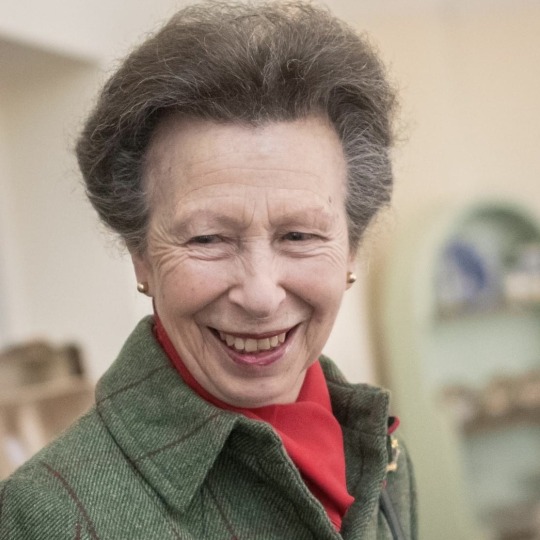
The Princess Royal’s Official Engagements in September 2024
01/09 unofficial With Sir Tim Attended a church service at Crathie Kirk. ⛪️🏴
10/09 As Colonel-in-Chief, visited The King's Royal Hussars at Aliwal Barracks in Tidworth, Wiltshire. 🪖
Sir Tim represented Princess Anne at a Service of Thanksgiving for Sir Clive Johnstone (National President of the Royal British Legion) which was held at St. Margaret's Church in Westminster, London. 🌹
11/09 Visited Estuary Services Limited and named a Pilot Vessel in Ramsgate Royal Harbour, followed by a Reception at Royal Temple Yacht Club. 🍾🚤
As Patron of the English Rural Housing Association, opened a new development at Carpenters Yard in Shepherdswell near Dover, Kent. 🌳🏠
12/09 As Patron of Citizens Advice Scotland, visited Penicuik Citizens Advice Bureau. ⚖️
As Patron of the International Sheep Dog Society, attended the International Sheep Dog Trials at Syde Farm in Lanarkshire. 🐑🐕
Unofficial Sir Tim attended the launch of the Bradford UK City of Culture 2025 🏙️
13/09 Attended the Southampton International Boat Show. 🚤
As Patron of the National Museum of the Royal Navy, visited the Fleet Air Arm Museum at Royal Naval Air Station Yeovilton in Ilchester, to mark its 60th anniversary. ✈️⚓️
As Patron of Save the Children UK, attended a Concert at Cheap Street Church in Sherborne, to mark 30 years of support from the Cambridge Choral Scholars. 🎶
16/09 As President of Victim Support, visited the Bristol Service at St Werburghs Community Centre, to mark its 50th anniversary. 🤝
As Patron of Gloucestershire Rugby Football Union, attended the Annual Volunteer Awards Reception at Lockleaze Sports Centre in Bristol. 🏉
17/09 As Colonel-in-Chief of The Royal Logistic Corps, visited the Joint Helicopter Support Squadron at A Hangar in Royal Air Force Benson. 🚁
As Patron of the National Transport Trust, attended the Annual Awards Ceremony at Fawley Hill Museum, in Henley-on-Thames. 🏆
As Royal Patron of the National Coastwatch Institution, attended a 30th anniversary reception at the Corporation of Trinity House. 🍾
18/09 As President of the UK Fashion and Textile Association, visited ApparelTASKER Sustainable Garment Manufacturer in London. 👕👖
20/09 As Patron of the Beef Shorthorn Cattle Society, attended a Members' Development Day at Podehole Farm in Thorney. 🐮
21/09 Unofficial With Sir Tim Departed from Kemble Airfield and arrived at Amsterdam Airport Schiphol. ✈️🇳🇱
With Sir Tim Attended a Reception at the Airborne Museum Hartenstein, to commemorate the 80th anniversary of the Battle of Arnhem. 🪂
22/09 With Sir Tim As President of the Commonwealth War Graves Commission, attended the Annual Service of Commemoration at Oosterbeek Airborne Cemetery. 🪦🌹
With Sir Tim Visited the house of “the Angel of Arnhem” in Oosterbeek. 🏠👼🏻
Unofficial With Sir Tim, departed from Amsterdam Airport Schiphol and arrived back at Kemble Airfield. ✈️🇬🇧
24/09 As President of the Scotch Chef’s Club, visited Hugh Black and Sons Limited in Stirling. 🥩🏴
As Patron of the Royal Highland Education Trust, attended a Food and Farming Day at Solsgirth Home Farm in Dollar. 🎓🚜
As Patron of Opportunity International United Kingdom, held a Dinner at St James’s Palace. 🌍 🍽️
25/09 On behalf of The King, held an Investiture at Windsor Castle in the morning and afternoon.
26/09 As President of the Commonwealth War Graves Commission, inaugurated the Loos British Cemetery extension and attended a Reburial Service of Unknown Soldiers. 🇬🇧🇫🇷🪦
Attended a Reception at the Town Hall, Place de la République in Loos-en-Gohelle, France. 🇫🇷🥂
As Patron of Sense International, attended a Dinner at Church House, Westminster, to mark the 30th anniversary of the charity. 🦯🦻🎂
27/09 Opened Hull Trinity House Academy in Hull, East Yorkshire. 🏫
As Patron of the Sailors’ Children’s Society, presented awards at the “Anchor of Celebration” ceremony at Hull Trinity House. 🏆⚓️
As Patron of the Spinal Injuries Association, attended a 50th anniversary reception at SIA House in Milton Keynes. 🦽🎂
30/09 With Sir Tim As Patron of the Minchinhampton Centre for the Elderly, visited Horsfall House, to mark its 30th Anniversary. 🏡🎂
As Colonel-in-Chief of The Royal Logistic Corps, visited the Gurkha Allied Rapid Reaction Corps Support Battalion to mark the redesignation of 170 Headquarters Squadron at Imjin Barracks. 🪖
Total official engagements for Anne in September: 33
2024 total so far: 313
Total official engagements accompanied/represented by Tim in September: 5
2024 total so far: 86
FYl - due to certain royal family members being off ill/in recovery I won't be posting everyone's engagement counts out of respect, I am continuing to count them and release the totals at the end of the year.
#princess anne#princess royal#tim laurence#timothy laurence#september 2024#unofficial engagement count 2024
35 notes
·
View notes
Text
Police arrest dozens as they break up pro-Palestinian protests at several US universities
Police made dozens of arrests as pro-Palestinian protest encampments were dismantled Friday at the University of Pennsylvania and the Massachusetts Institute of Technology, hours after police tear-gassed demonstrators and took down a similar camp at the University of Arizona.
Philadelphia and campus police at Penn took action around daybreak to remove protesters from an encampment in place for more than two weeks. School officials said protesters were given warnings and the chance to leave without being detained.
Initially, officials said 33 people, including faculty members and seven students, were among those arrested and charged with trespass, the school said. Later, school officials said nine students were among those arrested and that the remainder were people who had no affiliation with Penn. Upon searching the encampment, Penn police recovered several long lengths of heavy gauge chains, as well as smaller chains with nuts and bolts attached that police said could be used as weapons, officials said.
Protest camps have sprung up across the U.S. and in Europe in recent weeks as students demand their universities stop doing business with Israel or companies that support its war efforts. Organizers seek to amplify calls to end Israel’s war against Hamas in Gaza, which they describe as a genocide against the Palestinians. The top United Nations court has concluded there is a “plausible risk of genocide” in Gaza — a charge Israel strongly denies.
In Cambridge, Massachusetts, police in riot gear arrived at MIT around 4 a.m., encircled the camp and gave protesters about 15 minutes to leave. Ten students who remained were arrested, the university’s president said. A crowd outside the camp began chanting pro-Palestinian slogans but was quickly dispersed.
At the University of Arizona in Tucson, campus police in riot gear fired tear gas at protesters late Thursday — the day before the school’s main commencement ceremony — before tearing down an encampment that included wood and plastic barriers. The school said police vehicles were spiked, and rocks and water bottles were thrown at officers and university staff. Two people were arrested, a university spokesperson said. Friday night’s commencement will go forward, university President Robert Robbins said.
And at New Mexico State University in Las Cruces, police arrested 13 people Thursday night after they refused to leave a damaged and vandalized building. The charges ranged from misdemeanor trespass to felonies including battery on a peace officer, school spokesperson Amanda Bradford said. The building, Hadley Hall, was cleared and open Friday.
Protesters at the University of Wisconsin-Madison agreed Friday to permanently dismantle their 2-week-old encampment and not disrupt graduation ceremonies this weekend, in return for the opportunity to connect with “decision-makers” who control university investments by July 1. The university agreed to increase support for scholars and students affected by wars in Gaza and Ukraine.
Graduates from Pomona College in Southern California will have to travel 40 miles (65 km) for their commencement ceremony Sunday, as administrators seek to avoid a current encampment. The college said it will provide transportation to the venue, a historic theater in Los Angeles. In April, protesters entered an administration building and police arrested 20 people.
The protest movement began nearly three weeks ago at Columbia University in New York City. Some colleges nationwide cracked down immediately, while others tolerated the demonstrations. Some recently started calling in the police, citing concerns about disruptions to campus life and safety.
The Associated Press has recorded at least 75 instances since April 18 in which arrests were made at U.S. campus protests. Nearly 2,900 people have been arrested at 57 colleges and universities. The figures are based on AP reporting and statements from schools and law enforcement agencies.
Arizona State University on Friday confirmed that it had placed its campus police chief on paid administrative leave pending a review of “complaints filed related to his actions” two weeks ago when an encampment was removed and police made more than 70 arrests during a pro-Palestine rally on the campus in Tempe.
The school said it was reviewing actions surrounding the establishment and removal of the encampment. Local news outlets reported earlier that ASU Police Chief Michael Thompson had been placed on leave after he had been seen out of uniform cutting and removing tents during the protest. The school told ABC15 Arizona earlier he had left a meeting to respond to the rally.
Although their encampment was cleared after two weeks, demonstrators at George Washington University vowed Friday to keep up their protest campaign.
Police arrested 33 people on Wednesday while ousting the initial encampment. The next night, a crowd of chanting demonstrators returned to the university about five blocks from the White House, setting up tents while a large Metropolitan Police Department force assembled. After multiple warnings to disperse, protests leaders ended the demonstration around midnight. One person was arrested for throwing water at a police officer.
The move at MIT came several days after police first attempted to clear the camp, only to see protesters storm past barriers and restore the encampment, which includes about a dozen tents in the heart of the campus in Cambridge.
Before removing the encampment, MIT earlier in the week started suspending dozens of students, meaning they’re barred from academic activities or commencement.
Protesters insist they will keep demanding MIT cut all ties to the Israeli military. The encampment was up for weeks and especially angered Jewish students, who held counterprotests nearby.
“This is only going to make us stronger. They can’t arrest the movement,” said Quinn Perian, an undergraduate student and organizer for MIT Jews for Ceasefire. “MIT would rather arrest and suspend some students than they would end their complicity with the genocide going in Gaza.”
MIT President Sally Kornbluth, in a letter confirming Friday’s arrests, wrote that her responsibility is “to make sure that the campus is physically safe and functioning for everyone ... and that everyone feels free to express their views.” The encampment, she wrote, “increasingly made it impossible to meet all these obligations.”
0 notes
Text


CATHERINE'S STYLE FILES - 2020
15 JANUARY 2020 || The Duchess of Cambridge, along with Prince William, carried out engagements in Bradford.
#catherines style files#style files 2020#bradford visit 20#mine.#british royal family#british royals#british royalty#royalty#royals#kate middleton#catherine middleton#duchess of cambridge#royal#princess of wales#the princess of wales#princess catherine#alexander mcqueen.#bradford city hall 20#my lahore restaurant bradford 20#near neighbors bradford 20#khidmat centre bradford 20#aspinal of london.#catherine in zara.#catherine wearing zara.#zara.#gianvito rossi.#dazzling ceramic drop earrings.#catherine wearing zeen.#zeen.#fashion
28 notes
·
View notes
Photo

In a year that drastically challenged the way we go about our daily lives, the world of cinema remained stronger than ever, and was an absolute welcomed indulgence in such dark times. These films we found to be the perfect salve to a world aflame, seen in new virtual cinemas, online film festivals, and various VOD platforms. (Support your local indie theater, they need you.)
Opinions differ, international release dates change, but here we offer the films that stuck with us: the ones that continually expand our window to the world, brought tears of laughter or love, or simply helped us believe in a better (or worse) tomorrow. Seek them out, and consider them high recommendations for this next chapter in human existence.
• • • • • • •
1. House of Hummingbird (d. Bora Kim) 2. Days (d. Tsai Ming-liang) 3. Lovers Rock (d. Steve McQueen) 4. Lingua Franca (d. Isabel Sandoval) 5. The Metamorphosis of Birds (d. Catarina Vasconcelos) 6. Last and First Men (d. Jóhann Jóhannsson) 7. Jasper Mall (d. Bradford Thomason & Brett Whitcomb) 8. I’m Thinking of Ending Things (d. Charlie Kaufman) 9. Kill It and Leave This Town (d. Mariusz Wilczynski) 10. Never Rarely Sometimes Always (d. Eliza Hittman) 11. The Woman Who Ran (d. Hong Sang-soo) 12. Nomadland (d. Chloé Zhao) 13. Residue (d. Merawi Gerima) 14. Time (d. Garrett Bradley) 15. Liberté (d. Albert Serra) 16. A Sun (d. Chung Mong-hong) 17. Bait (d. Mark Jenkin) 18. David Byrne’s American Utopia (d. Spike Lee) 19. The Wild Goose Lake (d. Diao Yinan) 20. Fourteen (d. Dan Sallitt) 21. Minari (d. Lee Isaac Chung) 22. Tomasso (d. Abel Ferrara) 23. Maɬni – towards the ocean, towards the shore (d. Sky Hopinka) 24. Another Round (d. Thomas Vinterberg) 25. To the Ends of the Earth (d. Kiyoshi Kurosawa) 26. Freeland (d. Mario Furloni & Kate McLean) 27. Swallow (d. Carlo Mirabella-Davis) 28. Wolfwalkers (d. Tomm Moore & Ross Stewart) 29. Deerskin (d. Quentin Dupieux) 30. Fire Will Come (d. Oliver Laxe) 31. Sorry We Missed You (d. Ken Loach) 32. Family Romance, LLC (d. Werner Herzog) 33. Ema (d. Pablo Larraín) 34. The Assistant (d. Kitty Green)
• • • • • • •
* These are simply our suggestions. Feel free to make your own list. 🖤😀🎥⏳😽⚡️🌻🖤
Honorable mentions: A Dim Valley, The Inheritance, Sanzaru, Possessor, Song Without a Name, IWOW: I Walk on Water, City Hall, She Dies Tomorrow, Soul, Tigertail, Disclosure, Babyteeth, I Was Home, But..., Ma Rainey’s Black Bottom, Da 5 Bloods
#2020#films#cinema#recommended#house of hummingbird#bora kim#days#tsai ming liang#lovers rock#steve mcqueen#lingua franca#isabel sandoval#the metamorphosis of birds#catarina vasconcelos#last and first men#johann johannsson#tilda swinton#jasper mall#window pictures#i'm thinking of ending things#charlie kaufman#kill it and leave this town#animation#mariusz wilczynski#never rarely sometimes always#eliza hittman#the woman who ran#hong sang soo#nomadland#chloe zhao
123 notes
·
View notes
Photo

Jayne MacDonald, aged 16, a shop assistant who had recently left school, was the first non-prostitute, or an "innocent victim" as it was proclaimed, to die by the hand of Peter Sutcliffe, the Yorkshire Ripper.
On Saturday, June 25th, Jayne MacDonald had gone to meet friends near the Leeds city centre at the Hofbrauhaus, a German-style 'Bierkeller'. There she had met an 18-year-old named Mark Jones, with whom she had danced with. At 10:30 pm, the two set off, as part of a crowd, in the direction of Briggate, the main shopping street. Jayne had suggested going for chips and by the time they found a place, bought and eaten them, Jayne had missed her last bus. They sat on a bench until about midnight, before walking towards where Mark lived on an estate near St. James hospital. Mark told Jayne that if his sister was home then she could give Jayne a ride home. When it was obvious that his sister was not home, her car not being outside the house, they continued by his house and up Beckett Road in the direction of Chapeltown, and Jayne's home. They lay in a field for a while until after 1:00 am.
The two parted company outside the main gates of the hospital at around 1:30 am. They had agreed to met again later in the middle of the week. Jayne's intention was to call a taxi from the taxi firm's kiosk at the corner of Harehills Road. However, when she received no reply at the kiosk, she decided to continue on walking and came out of the maze of streets near the Grandways supermarket, were she worked. She continued past the Gaiety, where Emily Jackson was last seen, and was walking along Chapeltown Road in the direction of Reginald Street, and her home at 77 Scott Hall Avenue, just six doors away from the home of the first Yorkshire Ripper murder victim, Wilma McCann.
Peter Sutcliffe spent the night of June 25th in the company of Ronald and David Barker, who lived on the same street where Peter and his wife Sonia lived with her parents. After a night of drinking in the pubs of Bradford, Peter deposited them at the end of Tanton Crescent, Clayton, Bradford, and, instead of going home himself, he turned the car around and headed for his "hunting ground" in Leeds.
At around 2:00 am, Peter Sutcliffe saw Jayne MacDonald walking on Chapeltown Road. He parked and watched her for a few minutes before getting out of the car after arming himself with a hammer and a kitchen knife from under his seat and putting them in his pocket. He was quite certain she was a prostitute. Not only was she walking in a red-light area late at night, but he claims he saw her stop and talk to a couple of girls on a street corner. He then began to follow her for a short distance, and she never looked around as he followed, even though the distance between them wasn't great.
About 30 yards into Reginald Street, near an adventure playground, Sutcliffe struck Jayne MacDonald with the hammer on the back of the head. After she fell down, he then dragged her, face down, about 20 yards into the corner of the play area. Her shoes made a "horrible scraping noise" along the ground as he dragged her. He hit her again with the hammer and then pulled her clothes up and stabbed her several times in the chest and in the back.
At 9:45 am two children made their way into the adventure playground between Reginald Street and Reginald Terrace and discovered the body of Jayne MacDonald near a wall. Spots of blood on the pavement at the entrance of the adventure playground quickly established where she had first been attack. Her body was found lying face down, her gingham skirt disarranged, and her blue and white halter-neck sun top pulled up to expose her middle. She had been hit on the head three times with a hammer and had been stabbed about twenty times in the chest and on the back. There was repeated stabbing through one wound in her chest and and one wound in her back. Blood smears on her back revealed that Sutcliffe had tried to wiped his knife clean. When the police turned over her body, they discovered a broken bottle with the screw-top still attached had been embedded into her chest. Sutcliffe would later claim that he did not deliberately embed the bottle into her chest, and that it must have happened as he dragged her through the rubble on the playground. A post-mortem examination showed she had not been drinking, but had only had soft drinks that night.
The slaying of a young girl, not connected to the prostitute trade, an "innocent", brought not only national attention to the case, and outrage from the public not seen in the earlier murder cases, but also caused Chief Constable Ronald Gregory to appoint his most senior detective, Assistant Chief Constable George Oldfield to be in overall charge of the escalating Ripper murder investigations. Peter Sutcliffe claims to have been shocked when he saw the newspaper headlines that Jayne MacDonald had not been a prostitute as he had assumed.
Jayne’s father, Wilf MacDonald, a former railwayman, was to die two years after her murder, never having recovered from the ordeal of her murder.
#jayne macdonald#peter sutcliffe#yorkshire ripper#true crime#uk crime#serial killer#true crime research#victims
37 notes
·
View notes
Text
and yet we went on reading
Flim, sb. Obs. Sc[otch]. A whim; an illusion. 1 �� in the manufactory of these flimsy things 2 had hung a basket of fodder underneath for these flimsy things 3 Poor indeed are their prospects of continued protection, if they rest upon these flimsy things alone. 4 will you never learn to choose good, useful, lasting articles, instead of these flimsy things that do good to no one, and that a breath 5 took hold of these flimsy things, Oh! 6 the discomfort, the positive misery of these flimsy things 7 wretchedly printed on bad paper, with few or no literary expenses, these flimsy things drag on 8 “These flimsy things don’t last long, they soon break,” said he. “Of course they do!” declared Madame Guibal, with an air of indifference. “I’m tired of having mine mended.” 9 In all her looks the words we see, These flimsy things are not for me And I with them do not agree. 10 of these flimsy things 11 the ice floes ran in under and cut out these flimsy things. 12 about 12 inch in being evident that these flimsy things are depth, which projects over the top of the difficult 13 He knew “Well, it’s a good deal warmer than when to leave a man unhindered and to these flimsy things” he said, lifting the 14 attempt to hit some of these flimsy things, you will put your screwdriver through them. 15 You undertake to fix some of these flimsy things and you put a screw driver into them and they go to pieces. 16 You undertake to fix some of these flimsy things and you put a it in the same condition although I know 17 Lucy gave her skirts a toss “I am getting tired of these flimsy things, and am trying to wear them out” 18 “I must get some more,” he said, “stronger than these flimsy things.” 19 First of all, I know now what it means to travel “light.” These flimsy things 20 These letters, these unintelligible flowers, these bits of lace and of paper, what are they? Around these flimsy things what is there left ? And yet we went on reading. But something strange is growing gradually greater... 21 “Why, if I put these flimsy things on now they’d be in holes before I ...” Thorough Young Lady enters. Thorough Young Lady — “Good morning... I’d like a dozen” 22 They had seen it as a whim, Agnes knew; a flimsy, floating thing which scientists might examine under a microscope. But if that were what it was she was full of them. 23
sources (all but the last pre-1923)
1 Joseph Wright (1855-1930), The English dialect dictionary (London, 1898) vol. 2 : 405 2 OCR cross-column misread (on forged bank notes, and banks), at The Black Dwarf (“A London weekly publication, edited, printed, and published by T.J. Wooler”; January 13, 1819) : columns 21-22 “The Black Dwarf (1817–1824) was a satirical radical journal... published by Thomas Jonathan Wooler, starting in January 1817 as an eight-page newspaper, then later becoming a 32-page pamphlet. It was priced at 4d a week until the Six Acts brought in by the Government in 1819 to suppress radical unrest forced a price increase to 6d. In 1819 it was selling in issues of roughly 12,000 to working people such as James Wilson at a time when the reputable upper-middle class journal Blackwood’s Magazine sold in issues of roughly 4,000 copies.” wikipedia on Thomas Jonathan Wooler (1786-1853), also see wikipedia 3 OCR cross-column misread, at “Mrs. Perewinkle’s Visit to Boston,” by “Muhitable Holyoke,” in Frank Leslie’s New Family Magazine 3:2 (August 1858) : 161-167 (162) 4 ex The Chronicle (“An insurance journal”) 10:18 (October 31, 1872) : 274 on the mismanagement of The Globe Mutual Life Insurance Company under Frederick A. Freeman, its president, and/or other members of the Freeman family (including Pliny Freeman). 5 ex Out of the world, by M. Healy vol. 2 (of 3; London, 1875) : 27 asides — this would be Mary Healy Bigot (1843-1936), daughter of the painter George P. A Healy (1813-94 *) A brief entry on Mary Healy is found at A Database of Victorian Fiction, 1837-1901; rather more, including an extensive list of her publications (journalism, fiction, translations, &c.) is found at her French wikipedia page — “Mary Healy utilisa le pseudonyme de Jeanne Mairet, mais aussi celui de « Madame Charles Bigot » et de « Mary Healy-Bigot ». On trouve des écrits non seulement publiés en français (souvent par Paul Ollendorff), mais aussi en anglais et en allemand. Elle produisit aussi de nombreuses traductions avec parfois l'aide de sa soeur Edith Healy.” in his autobiography is to be found the reason he (and later his daughter after the death of her husband Charles Bigot (1840-93 *)) would move to Chicago — George P. A. Healy, his Reminiscences of a Portrait Painter (Chicago, 1894) : 57 6 ex Alex(ander). Mackenzie, The Life and Speeches of Hon. George Brown (Toronto, 1882), in Chapter 19, The reform convention of 1867. Resolution of thanks to Mr. Brown. Mr. Brown’s reply : 113 7 ex correspondence to the editor (on the subject of “new restrictions in dress”), by “Freedom,” in The Meteor (“Ed. by members of Rugby School”) 175 (May 18, 1882) : 60 8 ex John Bull’s Neighbor in Her True Light : Being an Answer to some recent French criticisms. By a “Brutal Saxon.” Veluti in Speculum. (Third edition. London, 1884), in Chapter 11, The French Press: its Vanity—Le Temps and London Telegraph contrasted—Des Debats—Le Figaro—Le Clairon—Press Laws—Fear of Actions for Libel—Want of Freedom : 87 9 ex conversation about a fan, in Émile Zola (1840-1902 *), The Ladies’ Paradise : A Realistic Novel (London, 1886) : 74 aside — The novel is set in the world of the department store... (wikipedia) 10 “The Village Wedding,” in Poems by Chas. F(rederick). Forshaw, LL.D. (Bradford, 1889) : 28-33 (30) 11 from Act 2, Scene 4 of John Lesslie Hall (1856-1928) his Judas : A Drama in Five Acts (Williamsburg, Virginia; 1894) : 73 aside — “also known as J. Lesslie Hall, was an American literary scholar and poet known for his translation of Beowulf” (wikipedia); (some) papers at the College of William and Mary 12 ex “He saved others” (from Brotherhood Star), at Herald and Presbyter (“A Presbyterian family paper”) 68:46 (Cincinnati and St. Louis, November 17, 1897) : 15 in full — “When ice was running in the North River at New York, a ferryboat was crushed in, under the water line. An employe was sent down to stop the leak, or hold it until the boat could be run into the slip. Bedding, clothing and anything available were passed to him, but the ice floes ran in under and cut out these flimsy things. The boat reached the dock. Passengers were all hastened ashore. The boat was raised up by chains, so that the break was above the water, but the man did not come up on deck. They hastened below and found a bruised body of an unconscious man, pressed close against the opening. Careful nursing brought back life, but broken health and a disfigured body were his. ‘Even Christ pleased not himself.’” 13 OCR cross-column misread at J. B. Fulton, “Faulty Concrete Construction,” in Fireproof 3:6 (December 1903) : 31-33 (32) 14 ex OCR cross-column misread, at Francis Prevost (H. F. P. Battersby, 1862-1949 *), “The Siege of Sar,” in Ainslee’s (“A magazine of clever fiction”) vol. 12 (January 1904) : 1-44 (22) 15 ex Arthur H. Elliott, “The Gas Range in the Kitchen” In Light, Heat and Power 5:12 (February 1906) : 942-946 (944) self-described as “A monthly magazine devoted to the fields of illumination, and also combustion for producing heat and power, wherein the elements employed are natural, artificial, acetylene, gasolene, or petroleum gases.” 16 ex “The Gas Range in the Kitchen," in report of Elliott paper, in The Metal Worker, Plumber and Steam Fitter (March 3, 1906) : 52 17 same as no.s 14 and 15 above, but OCR cross-column misread, at Arthur H. Elliott, “The Gas Range in the Kitchen,” Progressive Age (Gas-Electricity-Water), 24:4 (February 15, 1906) : 96-99 (97) 97 Paper delivered at the First Annual Convention of the National Commercial Gas Association, held at the Cadillac Hotel, New York City, January 24th and 25th, 1906. 18 ex Mrs. Mary Dudeney. All Times Pass Over (London, 1909) : 75 (snippet view only, but entire at hathitrust) aside — little is found, biographically; author of poems, stories, even songs as Mary Du Deney (BL catalogue); are these of the same Mary? — “A novelty appeared in Judge Allen’s court in the shape of a woman, Mrs. Mary du Deney, who sought solace and mental refreshment in a book while her fate was being decided in a divorce proceeding. After reciting the grounds upon which she sought the divorce, the lady was lost to the world until the Judge cut the knot and she again felt the thrill of single blessedness.” (Los Angeles Herald (23 December 1900) : here); and ◾ “...Old Lady Was Swaying, Fatal Collision with Cyclist At Bridgwater. Returning a verdict of Accidental Death at the inquest on Thursday on Mrg. Mary Du Deney. aged 85, of 2. Holmes Buildings. St. Mary-street, Bridgwater, who died in the hospital on Tuesday...” (Taunton Courier, and Western Advertiser (20 September 1947) : here) 19 ex William Caine (1873-1925 *), The Devil in Solution, (nicely) Illustrated by George Morrow (London, 1911) : 68 (snippet view only, but opens to same page at hathitrust 20 from this longer passage — “First of all, I know now what it means to travel ‘light.’ These flimsy things which the Japanese make are wonderfully serviceable. For instance, I purchased a silk Japanese raincoat which sheds rain perfectly, and yet when not in use I carry it in the pocket of my light overcoat.” ex “Japanese Milling, and Weather,” in Rosenbaum Review 2:39 (Chicago; September 15, 1917) : 8-10 asides — devoted to grain trade; at some point title changes to The Round-Up; published by the J. Rosenbaum Grain Company; this would be Joseph Rosenbaum (1838-1919), whose interesting life is sketched by Arba Nelson Waterman, in “Historical Review of Chicago and Cook County and Selected Biography," found here ◾ perhaps more interesting is the editor of Rosenbaum Review (and its successor Round-Up), J. Ralph Pickell (1881-1939? *). ◾ see, for example — “Senate Asks Jardine of Chicago ‘College’” ¶ Secretary Jarine was asked Friday, June 25, by the Senate to explain his connection with the Roundup College of Scientific Price Forecasting of Chicago. ¶ A resolution making the request was offered by Senator Caraway (Dem. Ark.), and adopted. Caraway said the secretary had accepted appoitment as a member of the faculty of the college to teach students “how to speculate and get around the rules of the grain futures act which he administers.” ¶ The resolution asked the Secretary to state whether his information on grain futures markets was obtained as a result of his official connection with the department of agriculture, and what compensation he has received from the college. ¶ The Roundup College school for price broadcasting [sic, should be “forecasting” ?] was held at the Congress Hotel four weeks ago. Secretary Jardine was announced in publicity as the principal speaker. The school is run by J. Ralph Pickell, listed in the telephone book with offices at 1848 West Washington Boulevard and 328 Ashland Boulevard. It is said, however, that the offices have moved to Western Springs, Ill., near Chicago. ¶ Pickell at the time the school was held, said about 500 students would be in attendance. Each student, he said would pay $50 for the course. ex The Illinois Agricultural Association Record (July 1, 1926) : 3 21 ex chapter 23 (the last) in Henri Barbusse (1873-1935 *), Light (Fitzwater Wray, trans.; 1919) : 301 several scans of the same at hathitrust 22 ex Fashions for Men (this passage) and The Swan (in one volume, subtitled Two Plays by Franz Molnar (both comedies in three acts; English texts by Benjamin Glazer); (Liveright, 1922) : 117 Ferenc Molnár (1878-1952), at wikipedia 23 ex Rachel Cusk, Saving Agnes (1993; Picador 1995) : 2
—
subject to change, corrections, &c.
#cento#flim#flimsy#tercet#Mary Healy Bigot#The Black Dwarf#Rachel Cusk#Mary Du Deney#J. Ralph Pickell
5 notes
·
View notes
Text
THE DARK CORNER
November 10, 1947

Synopsis ~ A former San Francisco private eye, just in back New York after two years in prison (the victim of a frame-up), finds himself a target for another send-up and murder.
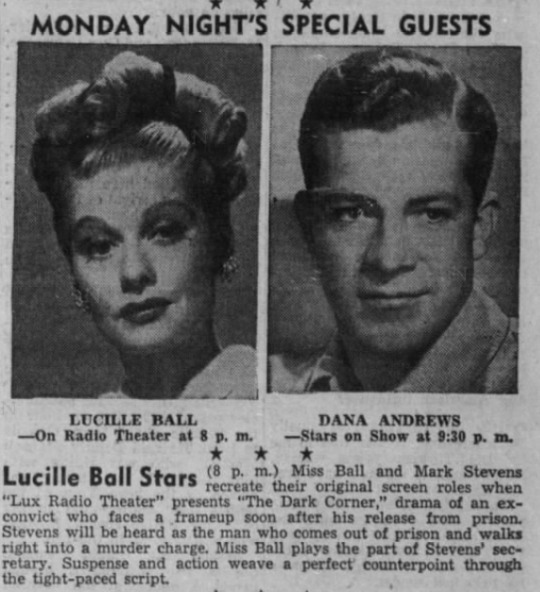
Directed by Fred MacKaye with musical direction by Louis Silvers and sound effects by Charlie Forsyth
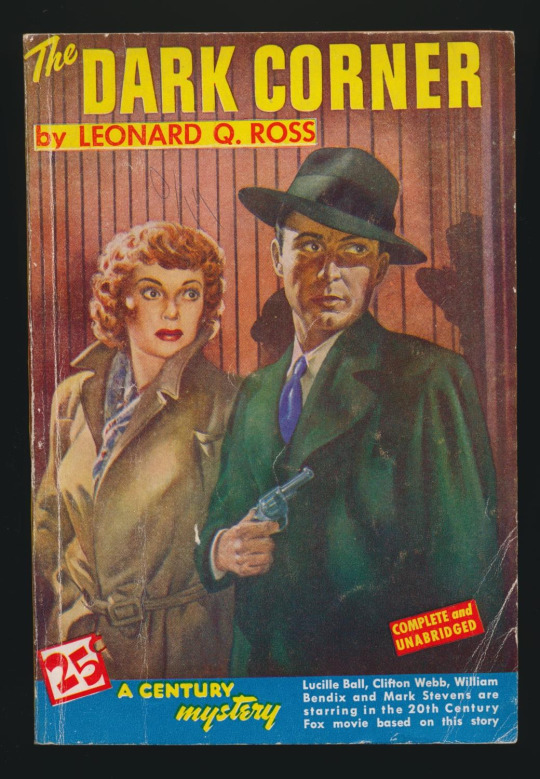
Adapted for radio by Sanford Barnett from the screenplay by Jay Dratler and Bernard Schoenfeld based on the book by Leo Rosten.
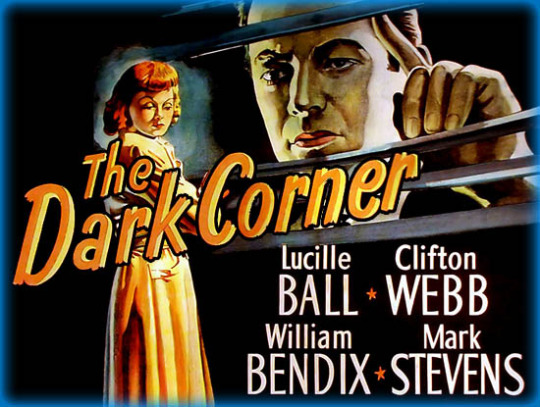
It was based on the 20th Century Fox motion picture of the same name released on May 8, 1946.
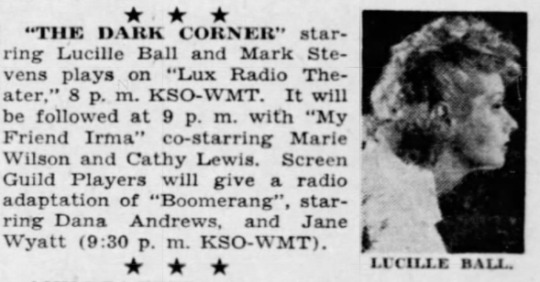
In later years, Lucille Ball was vocal about hating the experience of shooting The Dark Corner. Director Henry Hathaway's bullying reduced Ball to stuttering on set, at which point Hathaway accused her of being inebriated. At the time, Lucille Ball was suing to get out of her contract with MGM. As a result, MGM loaned her to Fox for this picture, which included a significant pay cut.
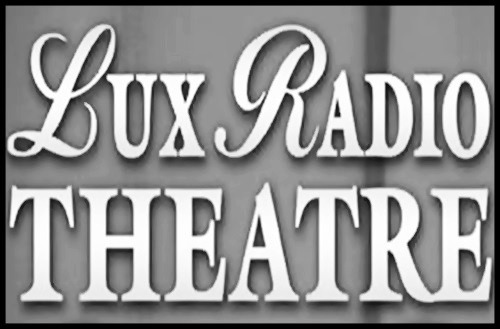
Lux Radio Theatre (1935-55) was a radio anthology series that adapted Broadway plays during its first two seasons before it began adapting films (”Lux Presents Hollywood”). These hour-long radio programs were performed live before studio audiences in Los Angeles. The series became the most popular dramatic anthology series on radio, broadcast for more than 20 years and continued on television as the Lux Video Theatre through most of the 1950s. The primary sponsor of the show was Unilever through its Lux Soap brand.
CAST

Lucille Ball (Kathleen Stewart) was born on August 6, 1911 in Jamestown, New York. She began her screen career in 1933 and was known in Hollywood as ‘Queen of the B’s’ due to her many appearances in ‘B’ movies. “My Favorite Husband” eventually led to the creation of “I Love Lucy,” a television situation comedy in which she co-starred with her real-life husband, Latin bandleader Desi Arnaz. The program was phenomenally successful, allowing the couple to purchase what was once RKO Studios, re-naming it Desilu. When the show ended in 1960 (in an hour-long format known as “The Lucy-Desi Comedy Hour”) so did Lucy and Desi’s marriage. In 1962, hoping to keep Desilu financially solvent, Lucy returned to the sitcom format with “The Lucy Show,” which lasted six seasons. She followed that with a similar sitcom “Here’s Lucy” co-starring with her real-life children, Lucie and Desi Jr., as well as Gale Gordon, who had joined the cast of “The Lucy Show” during season two. Before her death in 1989, Lucy made one more attempt at a sitcom with “Life With Lucy,” also with Gordon.
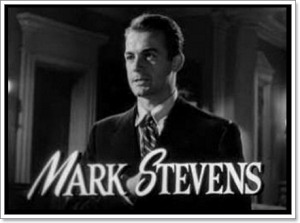
Mark Stevens (Bradford Galt) reprises his role from the film version of The Dark Corner (1946). He became a contract player for Warners at $100 a week in 1943 but they darkened and straightened his curly ginger-colored hair and covered his freckles. At first he was billed as Stephen Richards, he later changed it to Mark Stevens at the suggestion of Darryl F. Zanuck when he switched to 20th Century-Fox. He died in 1994 at age 77.

Joseph Kearns (Ralph Wickett) appeared on “I Love Lucy” as the psychiatrist in “The Kleptomaniac” (ILL S1;E27) and later played the theatre manager in “Lucy’s Night in Town” (S6;E22). His most famous role was as Mr. Wilson on TV’s “Dennis the Menace” (1959). When he passed away during the show’s final season, Lucy regular Gale Gordon took over for him, playing his brother.
In the film, the character was named Hardy Cathcart and was played by Clifton Webb.
Norma Jean Nilsson (Little Girl at the Boarding House) was a child actress who left Hollywood at age 19 after appearing in 16 films and television shows.
In the film, the character carries a slide whistle, which is not used here. She was played by Colleen Alpaugh.
Wally Maher (Fred Foss aka Stauffer) was born on August 4, 1908 in Cincinnati, Ohio. He was known for Mystery Street (1950), The Reformer and the Redhead (1950) and Hollywood Hotel (1937). He was married to Molly Bruno. He died on December 27, 1951.
In the feature film, the role was played by William Bendix, who would go on to fame as the title character in TV’s “The Life of Riley.”
Dan O'Herlihy (Anthony Jardine) was an Irish-born actor nominated for an Oscar in 1954 for Robinson Crusoe. In 1960 he made an appearance on Desilu’s “The Untouchables.” He was in two of the RoboCop movies. He died in 2005 at age 85.
In the feature film, the role was played by German-born actor Kurt Krueger.
Fay Baker (Mari Wickett) was born on January 31, 1917 in New York City as Fanita Baker Schwager. She was known for Notorious (1946), The House on Telegraph Hill (1951) and Deadline - U.S.A. (1952). She died on December 8, 1987.
In the feature film, the role was taken by Cathy Downs, making her first credited screen appearance.
ENSEMBLE
Trude Marson was seen in uncredited roles in four films from 1937 to 1947.
Noreen Gammill started her screen career as the voice of Catty the Elephant in Disney’s Dumbo (1941). She made two background appearances on “The Andy Griffith Show” (1963 and 1964), filmed on the Desilu backlot.
William Johnstone is probably best remembered as Judge Lowell on the long-running daytime drama “As The World Turns”. Prior to that he worked extensively in radio and took over the role of Lamont Cranston on "The Shadow" playing opposite Agnes Moorehead when Orson Welles left the series.
Janet Scott was a regular background voice on “Lux Radio Theatre” with dozens of episodes to her credit from 1937 to 1955.
Lois Corbett was married to Don Wilson of “The Jack Benny Program” and as such did more than a dozen episodes of the television shows with him from 1954 to 1964.
Edward Marr was seen in The Affairs of Annabel with Lucille Ball in 1938. He was also in two Bob Hope TV specials with Hope and Ball in 1966 and 1970.
Stanley Farrar was seen on “I Love Lucy” in “Home Movies” (ILL S3;E20) and “Staten Island Ferry” (ILL S5;E12). He on “The Lucy Show” in “Lucy and Arthur Godfrey” (TLS S3;E23) and “Lucy Meets Danny Kaye” (TLS S3;E15).
Herb Butterfield was born on October 28, 1895 in Providence, Rhode Island. He was known for The Halls of Ivy (1954), The House on Telegraph Hill (1951) and Shield for Murder (1954). On radio, he portrayed the Commissioner on NBC 's "Dangerous Assignment" (1949-53) and Clarence Wellman on "The Halls of Ivy" (1950-52). He died on May 2, 1957
Cliff Clark was seen with Lucille Ball in Her Husband’s Affairs (1947), Miss Grant Takes Richmond (1949), and The Fuller Brush Girl (1950).
OTHERS

William Keighley (Host and Producer) was the director of nearly 40 feature films between 1932 and 1953. His film The Adventures of Robin Hood (1938) was selected for the National Film Registry by the Library of Congress as being culturally significant.
Dorothy Lovett (Commercial Spokeswoman as Libby Collins, Hollywood Reporter) appeared as Meta Bauer on radio’s “The Guiding Light" (1945-47) and as Toni Sherwood in "The Adventures of Rocky Jordan". She did three films with Lucille Ball from 1939 to 1941.
Betty Ann Lynn (Herself, Act Two Intermission Guest) is best known for playing Thelma Lou on “The Andy Griffith Show” (1961 to 1965) which was filmed on the Desilu back lot.
John Milton Kennedy (Announcer) was the announcer of all 35 episodes of “The Loretta Young Show” from 1954 to 1955.
ACT ONE

William Keighley introduces the program, noting that many years earlier, director Fred Kohlmar saw a titian-haired young model who had great possibilities - Lucille Ball. He later had the privilege of presenting her in the film version of The Dark Corner. After a mention of Lux Toilet Soap, the program begins.
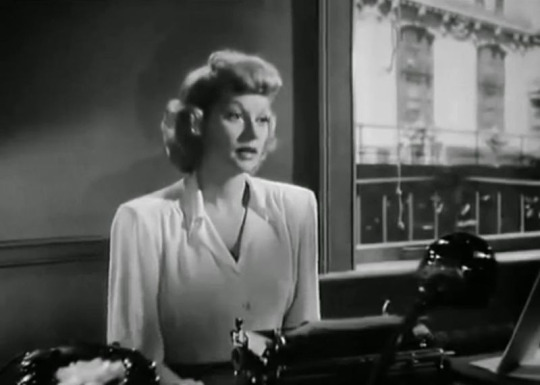
The action opens in a New York City office building on a sultry summer afternoon. Police detective Reeves visits the Offices of Bradford Galt, Private Investigator and speaks to his secretary, Kathleen Stewart.
Galt enters and Reeves wonders why Galt didn’t notify him that he moved offices after his prior unpleasantness. Galt asks Kathleen to have dinner with him. After dinner, Galt asks her to go dancing but she’s wise to his advance. As they walk down the street, they realize that they are being followed.
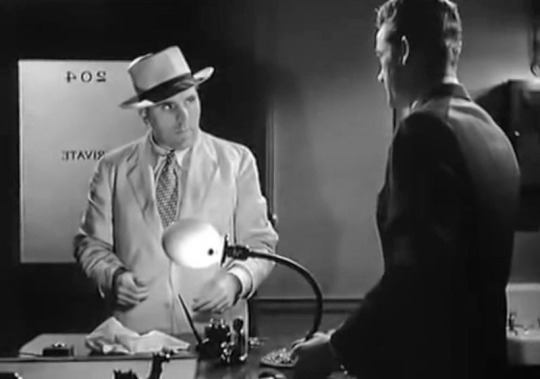
Kathleen takes a cab back to the office, while Galt confronts the pursuer at gunpoint, taking him back to his office for questioning. He says his name is Fred Foss, and that he’s also a private detective. Galt doesn’t believe him and decides to beat the truth out of him.

After some roughing up, Fred discloses that he is being paid to tail Galt by Anthony Jardine. In the tussle, some ink spills on Foss’s white suit. He lets Foss leave. Kathleen was supposed to tail Foss after he left the office, but he tricked her and got away.
Back at his rooming house, Foss uses the hall telephone to call art gallery owner Ralph Wickett, and his ink-stained suit is noticed by a Little Girl neighbor.
At a party for his third wedding anniversary, Wickett hangs up and is greeted by Jardine, a lawyer. Mrs. Lucy Wilding takes Jardine aside pretending to ask legal advice, but it is revealed that he is blackmailing her.
Meanwhile, Galt confides in Kathleen about his past. Jardine is trying to kill Galt because he was a former partner that Galt confronted about his blackmailing female clients. Now Jardine wants to finish the job.
Mari Wickett, Ralph’s wife, is having an affair with Anthony Jardine. She wants to run away with him. At the same time, Galt is headed there to settle the score.
End of Act One

A Lux commercial break takes the form of a story from Libby Collins, Hollywood Reporter. She says she saw Universal’s The Lost Moment starring Robert Cummings and Susan Hayward. Libby says she was on location when they filmed the big fire scene, the biggest fire ever done on a sound stage. She says that she and Susan Hayward washed the soot off their faces with Lux Toilet Soap!
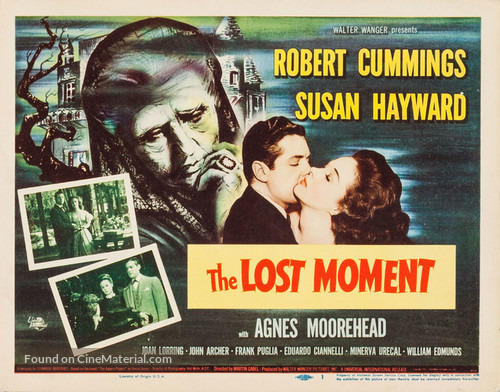
At the time of the broadcast, The Lost Moment was still two weeks from being released. It opened in cinemas on November 27, 1947. The story is set in Italy, so the cast included Edward Ciannelli, who played pizzeria owner Mr. Martinelli in “Visitor from Italy” (ILL S6;E5) and Saverio LoMedico who played the Rome hotel bellboy in “Lucy’s Italian Movie” (ILL S5;E23). The film was not a box office success.
ACT TWO

An hour has past since the end of Act One and Galt is at Jardine’s door. Galt threatens Jardine, who denies tailing him.The two fight while Mari is hiding in the other room. After Galt leaves, she convinces him to run away with her.
At the Gallery, Wickett is visited by Foss. It is clear Wickett is setting up Jardine to take the fall when he has Galt killed. Foss calls Galt to betray Jardine for a price. Galt suggests a one-on-one meeting at his apartment - 904 West 52nd, apartment 307 at 8pm sharp. Wickett will send Jardine to Galt’s apartment at 7:30pm.
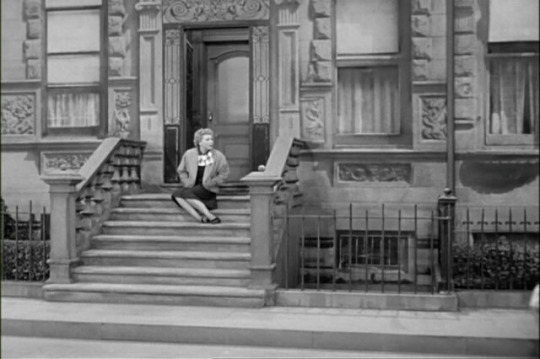
In reality, there is no such address. West 52nd Street in New York City ends at the the 600s block. This is similar to the Ricardo and Mertz apartment building. 623 East 68th Street, which, if real, would be in the East River!
Kathleen and Galt are supposed to meet at the movies, but he doesn’t show so he goes to his apartment at 8:30. Galt opens the door and reveals that Jardine is dead. Galt was ambushed with and knocked out with ether. He woke up to find Jardine’s body bludgeoned by the fireplace poker. Galt realizes he was set up.
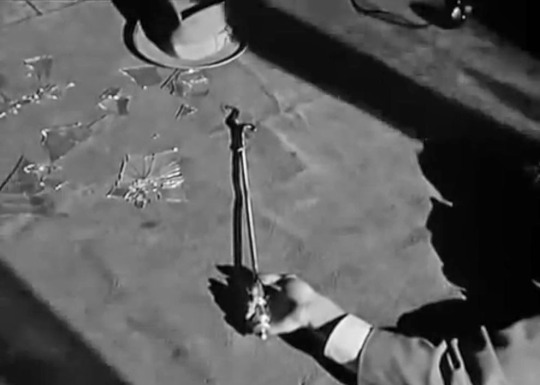
Later, Galt meets Kathleen at her apartment. He couldn’t find Foss and doesn’t know where to look next.
Wickett reminds Mari that they are due at the Kinsglsey’s that night, but she begs off. He strongly hints that he knows that Mari is stepping out on him and looking to run off.
Galt suddenly realizes that Foss would have to have his white suit cleaned, so he is determined to search all the cleaners for the suit and get his address.
Foss phones Wickett, and the Little Girl is there to overhear his conversation. Foss makes a plan to meet Wickett on the 31st floor of the Grant building.
Galt and Kathleen are about to give up on the search for the suit when a cleaner comes through. They get his address and trace Foss to the rooming house where he lives. His name turns out to be Stauffer, not Foss. The landlady reports that he moved out an hour ago and doesn’t know where he went. But the Little Girl does - and spills the beans for a quarter! Galt and Kathleen head for the Grant Building.
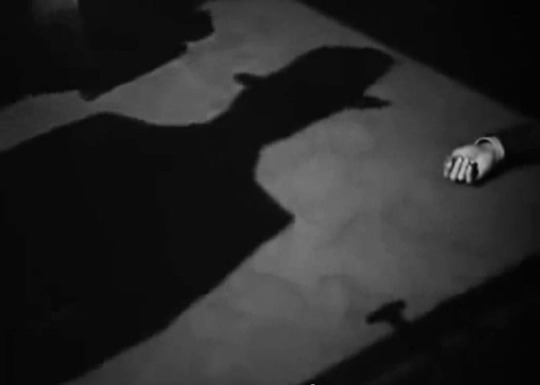
End of Act Two
In the break, Keighley interviews Fox contract player Betty Ann Lynn, who saw filming of Daryl F. Zanuck’s Gentleman’s Agreement starring Gregory Peck and Dorothy McGuire in a “very unusual picture”.

Gentleman’s Agreement premiered on November 11, one day after this broadcast, in both New York City and Chicago. It dealt with anti-Semitism and went on to win three Oscars, including Best Picture. The cast included Lucycom alumni Mike Lally, Shep Houghton, Roy Roberts, and Amzie Strickland in uncredited roles. Betty Ann Lynn says that she also likes to watch the filming of a costume picture like The Foxes of Harrow starring Rex Harrison and Maureen O’Hara, who had 26 costumes made just for her. She notes that O’Hara has a Lux complexion.
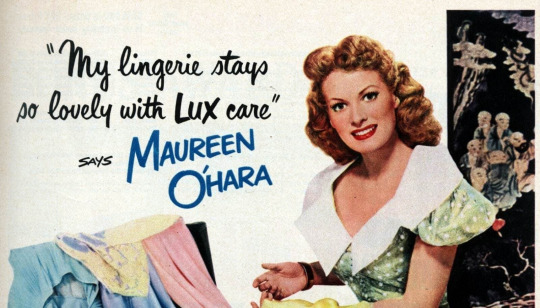
The Foxes of Harrow was released September 13, 1947. "Lux Radio Theater" broadcast a sixty minute radio adaptation of this movie on December 6, 1948, with Maureen O'Hara reprising her movie role. The movie was the screen debut of William Schallert, who did several episodes of “The Lucy Show.” O’Hara and Lucille Ball became lifelong friends after their 1940 film Dance, Girl, Dance. Like Gentleman’s Agreement, The Foxes of Harrow also features Roy Roberts, who went on to play bank president Mr. Cheever on “The Lucy Show.”
ACT THREE
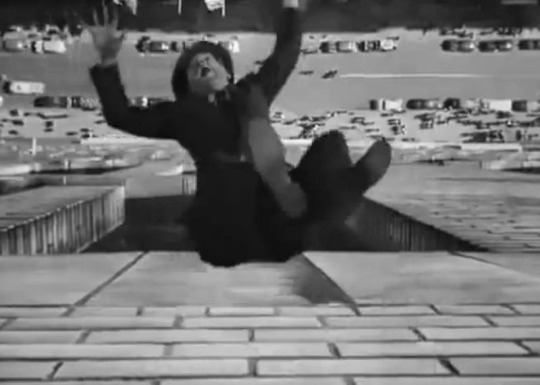
Kathleen and Galt rush to the Grant Building, where Mr. Wickett is about to settle accounts on a remote fire escape. Foss / Stauffer brings proof that Jardine is dead but Wickett throws him from the fire escape to his death.
Galt and Kathleen witness the whole incident from the street, as does the cab driver who was waiting for Foss / Stauffer. Thinking fast, Galt steals the cab which still contains Foss’s luggage. Later, we hear that the bags were only full of clothes. Kathleen urges him to keep thinking. Kathleen suddenly remembers that the Little Girl mentioned galleries. They put the pieces together and all evidence leads them to the Wickett Galleries. Galt heads there and questions the clerk. Under the guise of buying a painting, Galt inquires about meeting Mr. Wickett, and the clerk departs. Mari comes in the side door, and Galt tells her that Anthony Jardine has been murdered. She faints. Wickett comes in and when Galt tells him the truth, Ralph locks him in the gallery vault. Mari has revived and overhears Ralph’s threats, holding a gun on him. She shoots her husband dead.
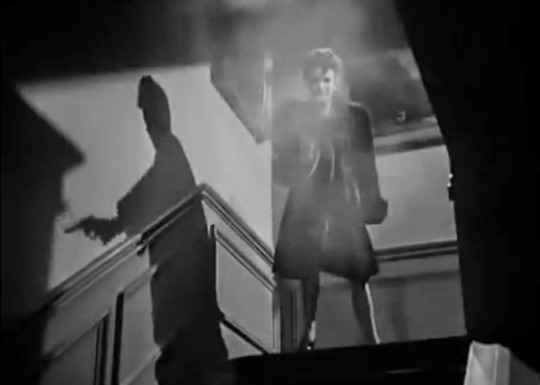
Kathleen has tipped off the police, who only want to charge him with stealing a taxi cab. Kathleen asks if he can be booked at another time because they have a date at the City Hall - to get married.
End of Story
As a curtain call, Keighley chats with Lucille Ball and Mark Stevens. He congratulates Ball on the success of her stage show, Dream Girl, a play she says she will do again in San Francisco. When Keighley asks how Lucille’s busy schedule and that of her husband Desi Arnaz’s leave any time for a personal life, Ball says that they will be playing in San Francisco at the same time.

In June 1947, Lucille Ball performed at New Jersey’s McCarter Theatre in Dream Girl, a play by Elmer Rice. It also played Brooklyn, Detroit and Boston.

The San Francisco production opened just a week after this radio telecast. As Ball states, Desi Arnaz was also in San Francisco at the time, playing in the Rose Room of the Palace Hotel, a fact that was advertised in the Dream Girl program. During the Los Angeles engagement in January 1948, Ball fell ill and had to withdraw. Although she love performing on stage, her radio career and then television success did not allow her to return to the footlights until 1960.

Lucy notes that like many other busy stars, she owes her good complexion to Lux Soap!
Turning to Mark Stevens, Lucille notes that he will play an FBI man in his next project at Fox, with Keighley as director.
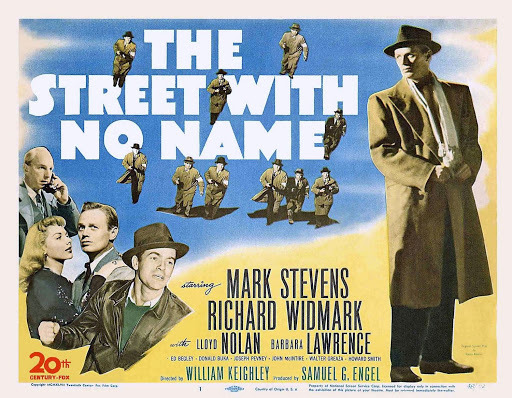
Although the film’s title is not mentioned, they are referring to The Street With No Name, which won’t be released until June 1948. Stevens plays Gene Cordell aka George Manley, a covert FBI agent who infiltrates a ruthless gangster mob. "Lux Radio Theater" broadcast a 60-minute radio adaptation of the movie on January 31, 1949 with Mark Stevens reprising his film role.
Keighley notes that next week “Lux Radio Theatre” will present Jane Wyman and Ronald Reagan in Nobody Lives Forever.

The Warner Brothers picture Nobody Lives Forever was released on November 1, 1946. It originally starred John Garfield and Geraldine Fitzgerald in roles taken on radio by Reagan and Wyman, who were husband and wife at the time. Of course, Reagan left Hollywood for a grander stage, first in California as Governor, then as President of the United States. He bestowed Lucille Ball with The Kennedy Center Honor in 1986.
A public service announcement asks housewives to salvage kitchen fats and turn them in at their local butcher for cash!
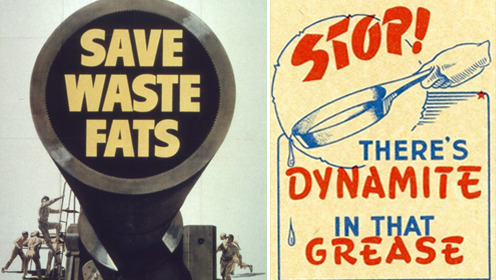
These were used to make supplies for wartime, such as ammunition and weapons.
Announcer Kennedy notes that Mark Stevens appeared through the courtesy of 20th Century Fox, producers of Forever Amber.

Forever Amber is a 1944 romance novel by Kathleen Winsor set in 17th-century England. It was made into a film in 1947 starring Cornel Wilde, who appeared in “The Star Upstairs” (ILL S4;E25). When “Lucy Writes A Novel” (ILL S3;E24), Ethel jokes about finding Lucy’s hidden manuscript and burning it: “We pulled down the kitchen blind and changed the name of your novel to 'Forever Ember.'”
‘DARK’ TRIVIA

In a September 1985 episode of “Remington Steele,” a character played by Stephen Dillane has the name Bradford Galt! The stories, however, are not otherwise connected.
In both the film and the radio show, Fred Foss gives his phone number as CH-elsea 4-43510. However, according to the Manhattan phone book for 1946, there were only CH-elsea 2 and CH-elsea 3 exchanges. Real phone numbers were rarely used in film or television.

When television began to supplant radio, “The Lux Video Theatre” was introduced. It was seen from 1950 to 1959. Initially, the show was a thirty-minute weekly show featuring live stage plays, but when it moved to NBC in August 1954, the show was extended to sixty minutes. As on radio, the programs were then primarily adaptations of motion pictures. The host would introduce each act, and would conduct an interview with the stars at the end of the play. Of the cast of this radio version of The Dark Corner:
William Keighley directed an episode in 1951.
Mark Stevens did an episode in 1955.
Dan O’Herlihy did five episodes.
Joseph Kearns did three episodes.
The character name Ralph Wickett replaced Hardy Cathcart for the radio show. It is likely that they could no longer get legal clearance to use the name Hardy Cathcart, necessitating the change.
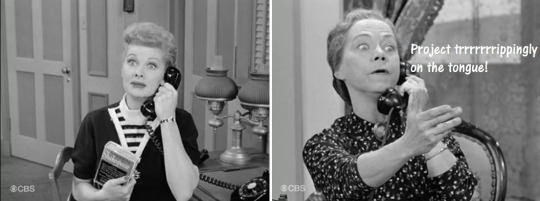
The film featured Ellen Corby as a maid, a role not in the radio drama. Corby went on to be seen as Lucy Ricardo’s high school acting teacher and in several small roles on “The Lucy Show” before her best-loved role of Grandma on “The Waltons.”

The film also features background work by Sam Harris, who did 15 films with Lucille Ball, in addition to multiple episodes of “I Love Lucy” and “The Lucy Show” as well as Harold Miller, who did eight films with Lucy and two episodes of “I Love Lucy”.

The film is available on DVD complete with DVD commentary and original trailer.

#The Dark Corner#Lucille Ball#Mark Stevens#Lux Radio Theatre#Radio#1948#Joseph Kearns#William Keighley#1947
8 notes
·
View notes
Text
bradford bid
BRADFORD IN THE 16TH CENTURY
. During the 16th century Bradford developed much bigger and more critical. This was despite flare-ups of torment. It struck Bradford in 1557-58. . The fleece industry proceeded to develop. By the 16th century, numerous individuals in towns close to Bradford wove fleece. It was at that point taken to the town to be filled and coloure .There was moreover an impressive calfskin tanning industry in Bradford. Approximately 1540 an author named Leland portrayed Bradford as: 'A lovely active showcase town, approximately half the measure of Wakefield. It has one area church and a chapel devoted to St Sitha. It lives for the most part by (making) clothing and is 4 miles far off from Halifax and 6 from Christ corridor (Kirkstall) Nunnery. There's a conversion in this town of 3 brooks'. By 1500 a language structure school existed in Bradford and within the late 16th century the wooden houses within the town were revamped in stone.
BRADFORD IM THE 17TH CENTURY.
• In 1642 came the gracious war between the lord and parliament. The individuals of Bradford unequivocally upheld parliament but the encompassing farmland sided with the ruler. In October royalist troops made there, to begin with, endeavour to require Bradford but the townspeople effortlessly drove them off. The royalists returned in December 1642 but once more they were driven off. In January 1643 a drive of parliamentary warriors was sent to involve Bradford. • In June 1643 a royalist army was sent to require the town. Sometime recently they arrived the parliamentary commander chosen Bradford was as well troublesome to guard and he chose to slip absent. In any case, his men were captured by the royalists at Adwalton Field. The royalists were victorious. • The vanquished parliamentary armed force fled back to Bradford. After 2 days they chose to elude at night. Most of them battled their way through the royalist lines and gotten away.
The royalist officers at that point entered Bradford and sacked it. Bradford remained in the royalist's hands for a brief time but they surrendered the town at the starting of 1644. • In Walk 1644 the parliamentarians once more entered Bradford. It remained in parliamentary hands till the conclusion of the gracious war. Be that as it may, the enduring of the individuals of Bradford was not over. There was another flare-up of torment in Bradford in 1645. BRADFORD IN 18TH CENTURY • In the early 18th century Bradford was a little showcase town with a populace of, maybe, 4,000. Be that as it may, within the late 18th century Bradford was changed by the industrial revolution. • The material industry within the north of Britain boomed. The primary bank in Bradford opened in 1771. Bradford canal was built in 1774 and in 1777 it was connected to the Leeds-Liverpool canal. The advancement in communications boosted industry within the town. In 1793 a Bit Corridor was built where cloth can be bought and sold. Be that as it may, after 1800 the hand linger weavers.
BRADFORD IN 19TH CENTURY
• In the late 18th century and early 19th Bradford developed exceptionally quickly. In 1780 it had a populace of around 4,500. By 1801 it had more than 6,000 tenants. By 1851 the populace of Bradford had come to an extraordinary 103,000. The gigantic rise in the populace was mostly due to migration from Germany and Ireland. • The exceptionally quick development of Bradford implied houses were built in an aimless design. There were no building controls until 1854 and most working-class lodgings were repulsive. There were no sewers or channels and stuffing was common. Most exceedingly bad of all were the cellar residences. Entirety families lived in clammy, ineffectively ventilated cellars. Regularly destitute families had no furniture. They utilized wooden boxes as tables and rested on straw or rags. • However there were a few enhancements in Bradford within the 19th century. In 1803 an Act of Parliament shaped a bunch of men called the Enhancement Commissioners who had powers to clean the lanes and light them with oil lights. They might too give a fire motor and a tidy cart. After 1823 the boulevards of Bradford were lit by gas. In 1847 an enterprise was shaped to run Bradford. • However, like all mechanical cities in those days, Bradford was terrifyingly unsanitary. In 1848-49 420 individuals kicked the bucket amid a cholera plague. In any case life in 19th century Bradford slowly moved forward. Within the 1860s and early 1870s, the organization made a organize of channels and sewers. From 1744 a private water company provided channelled water to anybody in Bradford who might pay. The committee obtained the company in 1854. After 1854 building directions progressed the quality of modern working-class houses. (Although dreadfully awful residences built some time recently at that point remained for decades). In 1877 Bradford organization started the work of ghetto clearance.
• In the 19th century it was common to debase foodstuffs by including cheap substances. Calcium sulfate was included in peppermints. In 1858 a sweet creator in Bradford sent some person to get a few from a pharmacist. In any case, by botch, the pharmacist collaborator picked up a few arsenic considering it was calcium sulfate. Arsenic was included in the desserts. As a result, 200 individuals got to be genuinely sick and 20 died. • Meanwhile in 1853-71 Titus Salt built a show town at Saltaire. The town had better than average working-class homes, schools, and a church. • There were other enhancements to Bradford amid the 19th century. In 1843 a hospital was built. The primary stop, Peel Stop, opened in 1863. The enterprise obtained Peel Park in 1870. The primary open library in Bradford opened in 1872. • Meanwhile the railroad comes to Bradford in 1846 and from 1882 horse-drawn cable cars ran within the streets. Electricity was, to begin with, created in Bradford in 1889 and in 1898 the primary electric cable cars ran within the lanes. The
BRADFORD Within The 20TH CENTURY
• In 1904 a Mechanical Show was held in Bradford. Cartwright Dedication Lobby was built in 1904. The Alhambra Theater opened in 1914. • to begin with board houses in Bradford were built-in 1907. Many more were built within the 1920s and 1930s to supplant annihilated ghettos. In 1919 the Church of St Dwindle was made Bradford Cathedral. Bradford Regal Hospital was built in 1936. • However on 21 Admirable 1916 blasts in a weapons production line slaughtered 39 individuals and harmed 2,000 houses. • Meanwhile in 1910 Benjamin and William Jowett began making cars in Bradford. The Jowett company made cars until 1954. Within the 1920s and 1930s, the material industry declined strongly and there was mass unemployment in Bradford. In any case, modern businesses came to Bradford such as a building. Printing moreover prospered and there was enormous increment within the number of clerical employments. Numerous more individuals worked in managing an account, protection, gracious benefit and neighbour hood government. In any case in 1939 the material industry.
• In the late 20th-century tourism got to be a major industry in Bradford. Cliffe Castle Exhibition hall opened in 1959. Bradford Mechanical Historical centre opened in 1974. The Colour Exhibition hall opened in 1978. The Exhibition hall of Photography, Film and Tv opened in 1983. The Peace Exhibition hall opened in 1997. • In the 1950s Bradford was changed by expansive scale migration from the West Indies, India, Bangladesh and Pakistan. Bradford got to be a multicultural city. • In the 1950s and 1960s numerous more chamber houses were built and the city center was redeveloped. Bradford College opened in 1966. The Kirkgate Middle opened in 1971 and 1974 Bradford was made a Metropolitan Area Committee. In the meantime in 1977 a Transport Compatibility was built in Bradford.
BRADFORD Within The MIDE 20TH CENTURY
• In 1955 the war of ghetto houses continued especially in Manchester where 68,000 were classified to be unfit. • In 1957 Henry Brooke the MP Serve of lodging and neighbourhood Government found that annihilated or condemned houses are expanding 20.000 in 1954 to 35,000 in 1956, whereas rehousing over 200.000 individuals amid the mid-1950s. • In 1960 a few neighbourhood specialists came to accumulate with a long term arrangement to address ghetto issues they found out that between 1955-1960, 416,706 houses were assessed unfit but as it were 65.372 were pulverized by 1960. Liverpool was one of the most noteworthy with around 88,000 taken after by Manchester. So they were one of the 38 areas that need that needs extraordinary attention. • Bradford board is arranging to make strides transportation system in Bradford within the another 15 a long time from 2018 Bradford Newsroom .by barging in the 21st-century cable cars which would connect to the proposed highspeed Northern Powerhouse Railroad.Got it from Bradford newsroom Thursday the 27th November 2018 at 11:30
• City pioneers says that would too give unused extra capacity between Bradford and Leeds with a modern halt at Laisterdyke and line running through the South of Bradford with a halt in Moo Field sometime recently proceeding onto Dewsbury in Kirklees. • A London Underground fashion graph was one of the proposed lines, which would connect Leeds city middle with Bradford, Spen Valley, Castleford and East Leeds. They are moreover trusting to incorporate Leeds legs of HS2 Rail station which is anticipated to be done by 2023
• The board says all usually within the early stages of improvement but guaranteeing that Bradford and the more out of control locale features a transport. organize fit for the 21st century that can take full advantage of a city middle station for Northern Powerhouse Rail. • washrooms Thursday the 27th November 2018 at 11:30 • City pioneers says that would too give modern extra capacity between Bradford and Leeds with a modern halt at Laisterdyke and line running through the South of Bradford with a halt in Moo Field sometime recently proceeding onto Dewsbury in Kirklees. • A London Underground fashion chart was one of the proposed lines, which would connect Leeds city middle with Bradford, spend Valley, Castleford and East Leeds. They are moreover trusting to include Leeds legs of HS2 Rail station which is anticipated to be done by 2023 • The chamber says all this can be within the early stages of improvement but guaranteeing that Bradford and the more out of control locale incorporates a transport organize fit for the 21st century that can take full advantage of a city centre station for Northern Powerhouse Rail.
1 note
·
View note
Text
Assuming Kate has no more engagements this month, this has been her busiest January bar 2018, which involved the two day tour of Sweden. If you take out the tour, it’s been her busiest January.
2011 - Not yet married. 0 engagements
2012 - 1 engagement (War Horse Premiere)
2013 - Pregnant. 1 engagement (Visit to the National Portrait Gallery)
2014 - Maternity leave. 0 engagements
2015 - Pregnant. 4 engagements (Clore Duffield Art Room, Fostering Network, Family Friends, Kensington Aldridge Academy)
2016 - Maternity leave. 0 engagements
2017 - 4 engagements (Early Years Parenting Unit, Child Bereavement UK, Heads Together Campaign Briefing, Quidenham Hospice)
2018 - Pregnant. Tour of Sweden. 20 engagements [9 engagements + 11 tour engagements] (Reach Academy, HeadStart Conference, Coventry Cathedral, Coventry University, Positive Youth Foundation, GOSH, Wimbledon Junior Tennis Initiative, King's College London, Bethlem Royal Hospital, Sweden Tour)
2019 - Maternity leave. 6 engagements (King Henry's Walk Community Garden, Royal Opera House, Family Action, Victoria and Albert Museum, Dundee Michelin tyre factory, Ms. Lorraine Heggessey)
2020 - 12 engagements (Mr. Jason Knauf, Early Years Meeting, Bradford City Hall, MyLahore, Khidmat Centre, Early Years Meeting, UK-Africa Investment Summit, Think Tank, Ely and Caerau Children's Centre, HM Prison Send, Holocaust Memorial Day, Creative Workshop at Evelina London)
17 notes
·
View notes
Text
Alberta Hunter
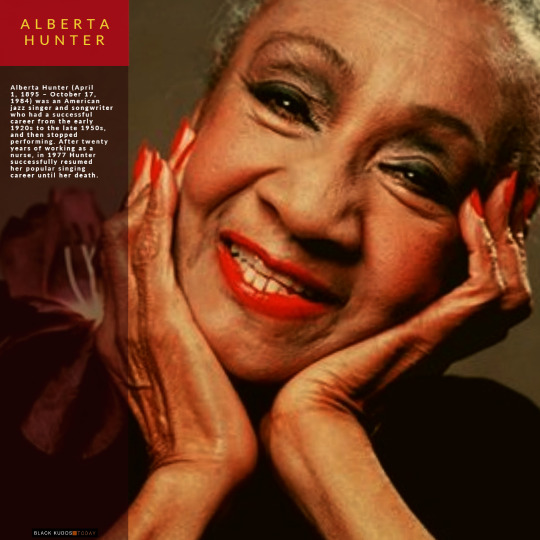
Alberta Hunter (April 1, 1895 – October 17, 1984) was an American jazz singer and songwriter who had a successful career from the early 1920s to the late 1950s, and then stopped performing. After twenty years of working as a nurse, in 1977 Hunter successfully resumed her popular singing career until her death.
Early life
Hunter was born in Memphis, Tennessee, to Laura Peterson, who worked as a maid in a Memphis brothel, and Charles Hunter, a Pullman porter. Hunter said she never knew her father. She attended Grant Elementary School, off Auction Street, which she called Auction School, in Memphis. She attended school until around age 15.
Hunter had a difficult childhood. Her father left when she was a child, and to support the family her mother worked as a servant in a brothel in Memphis, although she married again in 1906. Hunter was not happy with her new family and left for Chicago, Illinois, around the age of 11, in the hopes of becoming a paid singer; she had heard that it paid 10 dollars per week. Instead of finding a job as a singer she had to earn money by working at a boardinghouse that paid six dollars a week as well as room and board. Hunter's mother left Memphis and moved in with her soon afterwards.
Career
Early years: 1910s–1940s
Hunter began her singing career in a bordello and soon moved to clubs that appealed to men, black and white alike. By 1914 she was receiving lessons from a prominent jazz pianist, Tony Jackson, who helped her to expand her repertoire and compose her own songs.
She was still in her early teens when she settled in Chicago. Part of her early career was spent singing at Dago Frank's, a brothel. She then sang at Hugh Hoskin's saloon and, eventually, in many Chicago bars.
One of her first notable experiences as an artist was at the Panama Club, a white-owned club with a white-only clientele that had a chain in Chicago, New York and other large cities. Hunter's first act was in an upstairs room, far from the main event; thus, she began developing as an artist in front of a cabaret crowd. "The crowd wouldn't stay downstairs. They'd go upstairs to hear us sing the blues. That's where I would stand and make up verses and sing as I go along." Many claim her appeal was based on her gift for improvising lyrics to satisfy the audience. Her big break came when she was booked at Dreamland Cafe, singing with King Oliver and his band.
She peeled potatoes by day and hounded club owners by night, determined to land a singing job. Her persistence paid off, and Hunter began a climb from some of the city's lowest dives to a headlining job at its most prestigious venue for black entertainers, the Dreamland ballroom. She had a five-year association with the Dreamland, beginning in 1917, and her salary rose to $35 a week.
She first toured Europe in 1917, performing in Paris and London. The Europeans treated her as an artist, showing her respect and even reverence, which made a great impression on her.
Her career as singer and songwriter flourished in the 1920s and 1930s, and she appeared in clubs and on stage in musicals in both New York and London. The songs she wrote include the critically acclaimed "Downhearted Blues" (1922).
She recorded several records with Perry Bradford from 1922 to 1927.
Hunter recorded prolifically during the 1920s, starting with sessions for Black Swan in 1921, Paramount in 1922–1924, Gennett in 1924, OKeh in 1925–1926, Victor in 1927 and Columbia in 1929. While still working for Paramount, she also recorded for Harmograph Records under the pseudonym May Alix.
Hunter wrote "Downhearted Blues" with Lovie Austin and recorded the track for Ink Williams at Paramount Records. She received only $368 in royalties. Williams had secretly sold the recording rights to Columbia Records in a deal in which all royalties were paid to him. The song became a big hit for Columbia, with Bessie Smith as the vocalist. This record sold almost 1 million copies. Hunter learned what Williams had done and stopped recording for him.
In 1928, Hunter played Queenie opposite Paul Robeson in the first London production of Show Boat at Drury Lane. She subsequently performed in nightclubs throughout Europe and appeared for the 1934 winter season with Jack Jackson's society orchestra at the Dorchester, in London. One of her recordings with Jackson is "Miss Otis Regrets".
While at the Dorchester, she made several HMV recordings with the orchestra and appeared in Radio Parade of 1935 (1934), the first British theatrical film to feature the short-lived Dufaycolor, but only Hunter's segment was in color. She spent the late 1930s fulfilling engagements on both sides of the Atlantic and the early 1940s performing at home.
Hunter eventually moved to New York City. She performed with Bricktop and recorded with Louis Armstrong and Sidney Bechet. She continued to perform on both sides of the Atlantic, and as the head of the U.S.O.'s first black show, until her mother's death.
In 1944, she took a U.S.O. troupe to Casablanca and continued entertaining troops in both theatres of war for the duration of World War II and into the early postwar period. In the 1950s, she led U.S.O. troupes in Korea, but her mother's death in 1957 led her to seek a radical career change.
Retirement: late 1950s–1970s
Hunter said that when her mother died in 1957, because they had been partners and were so close, the appeal of performing ended for her. She reduced her age, "invented" a high school diploma, and enrolled in nursing school, embarking on a career in health care, in which she worked for 20 years at Roosevelt Island's Goldwater Memorial Hospital.
The hospital forced Hunter to retire because it believed she was 70 years old. Hunter—who was actually 82 years old—decided to return to singing. She had already made a brief return by performing on two albums in the early 1960s, but now she had a regular engagement at a Greenwich Village club, becoming an attraction there until her death, in October 1984.
Comeback: 1970s–1980s
Hunter was still working at Goldwater Memorial Hospital in 1961 when she was persuaded to participate in two recording sessions. In 1971 she was videotaped for a segment of a Danish television program, and she taped an interview for the Smithsonian Institution.
In the summer of 1976, Hunter attended a party for her long-time friend Mabel Mercer, hosted by Bobby Short; music public relations agent Charles Bourgeois asked Hunter to sing and connected her with the owner of Cafe Society, Barney Josephson. Josephson offered Hunter a limited engagement at his Greenwich Village club, The Cookery. Her two-week appearance there was a huge success, turning into a six-year engagement and a revival of her career in music.
Impressed with the attention paid her by the press, John Hammond signed Hunter to Columbia Records. He had not previously shown interest in Hunter, but he had been a close associate of Barney Josephson decades earlier, when the latter ran the Café Society Uptown and Downtown clubs. Her Columbia albums, The Glory of Alberta Hunter, Amtrak Blues (on which she sang the jazz classic "Darktown Strutters' Ball"), and Look For the Silver Lining, did not sell as well as expected, but sales were nevertheless healthy. There were also numerous appearances on television programs, including To Tell the Truth (in which panelist Kitty Carlisle had to recuse herself, the two having known each other in Hunter's heyday). She also had a walk-on role in Remember My Name, a 1978 film by the producer Robert Altman, for which he commissioned her to write and to perform the soundtrack music.
Personal life
In 1919, Hunter married Willard Saxby Townsend, a former soldier who later became a labor leader for baggage handlers via the International Brotherhood of Red Caps, was short-lived. They separated within months, as Hunter did not want to quit her career. They were divorced in 1923.
Hunter was a lesbian but kept her sexuality relatively private. In August 1927, she sailed for France, accompanied by Lottie Tyler, the niece of the well-known comedian Bert Williams. Hunter and Tyler had met in Chicago a few years earlier. Their relationship lasted until Tyler's death, many years later.
Hunter is buried in the Ferncliff Cemetery and Mausoleum in Hartsdale, Westchester County, New York (Elmwood section, plot 1411), the location of many celebrity graves.
Hunter's life was documented in Alberta Hunter: My Castle's Rockin' (1988 TV movie), a documentary written by Chris Albertson and narrated by the pianist Billy Taylor, and in Cookin' at the Cookery, a biographical musical by Marion J. Caffey, which has toured the United States in recent years with Ernestine Jackson as Hunter. Hunter's life and relationship with Lottie Tyler are represented in the play Leaving the Blues by Jewelle Gomez, produced by the TOSOS theatre company in New York City in 2020.
Hunter was inducted to the Blues Hall of Fame in 2011 and the Memphis Music Hall of Fame in 2015. Hunter's comeback album, Amtrak Blues, was honored by the Blues Hall of Fame in 2009.
Discography
Early work: 1921–1946
Hunter, Alberta. Complete Recorded Works in Chronological Order. Volume 1: May 1921 to February 1923. Vienna, Austria: Document Records, 1996. DOCD-5422. OCLC 35186454.
Hunter, Alberta. Complete Recorded Works in Chronological Order. Volume 2: February 1923 to November 1924. Vienna, Austria: Document Records, 1996. DOCD-5423. OCLC 35186490.
Hunter, Alberta. Complete Recorded Works in Chronological Order. Volume 3: 6 November 1924 to 26 February 1927. Vienna, Austria: Document Records, 1996. DOCD-5424. OCLC 37591743.
Hunter, Alberta. Volume 5: The Alternate Takes. 1921–1925. Vienna, Austria: Document Records, 1997. DOCD-1006. OCLC 38880479.
Hunter, Alberta, and Jack Jackson. The Legendary Alberta Hunter. The London Sessions with Jack Jackson & His Orchestra. New York: DRG, 1981. Recorded at the Dorchester Hotel, September–November 1934. OCLC 178720357.
Featuring Fletcher Henderson, Eubie Blake, Jimmy Lytell, Phil Napoleon, Elmer Chambers, Don Redman, Frank Signorelli
Featuring Fletcher Henderson, Joe Smith, Fats Waller, Tommy Ladnier, Jimmy O'Bryant, Lovie Austin, Elkins-Payne Jubilee Quartette
Featuring Louis Armstrong, Sidney Bechet, Buster Bailey, Charlie Irvis, Perry Bradford, Clarence Williams, Mike Jackson
Featuring Ray's Dreamland Orchestra, Eubie Blake, Original Memphis Five, Fletcher Henderson, Paramount Boys, Lovie Austin
Collaborations: 1961
1961: Chicago: The Living Legends. Alberta Hunter with Lovie Austin's Blues Serenaders (Riverside), recorded September 1, 1961, in Chicago.
1961: Songs We Taught Your Mother: Alberta Hunter, Lucille Hegamin, Victoria Spivey (Bluesville/Original Blues Classics), recorded by Rudy Van Gelder, August 16, 1961, in Englewood Cliffs, New Jersey.
Comeback: 1978–1983
1978: Remember My Name, the soundtrack recording of the Robert Altman film Remember My Name (Columbia), OCLC 894368622
1980: Amtrak Blues (Columbia), OCLC 191945612
1981: Downhearted Blues: Live at the Cookery, a concert from the documentary Alberta Hunter: My Castle's Rockin, recorded December 1981 at the Cookery, New York (Varèse Sarabande), OCLC 74155365
1982: The Glory of Alberta Hunter (Columbia)
1983: Look for the Silver Lining (Columbia)
78 RPM Singles - Black Swan Records
78 RPM Singles - Paramount Records
78 RPM Singles - Gennett Records
78 RPM Singles - Harmograph Records
78 RPM Singles - Okeh Records
78 RPM Singles - Victor Records
78 RPM Singles - Columbia Records
4 notes
·
View notes
Text

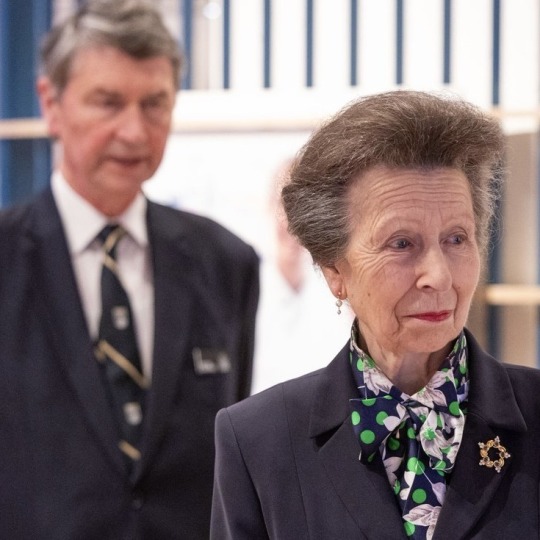
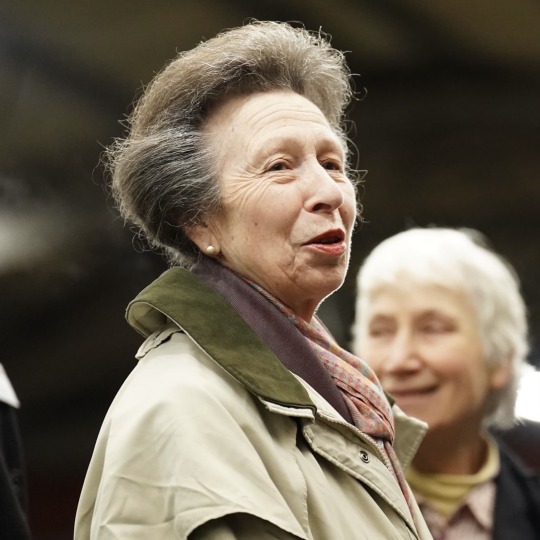
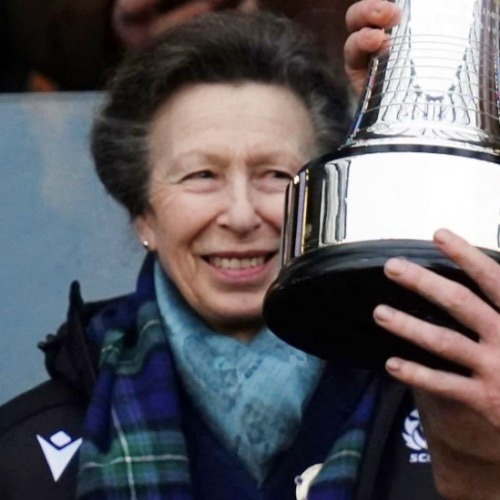

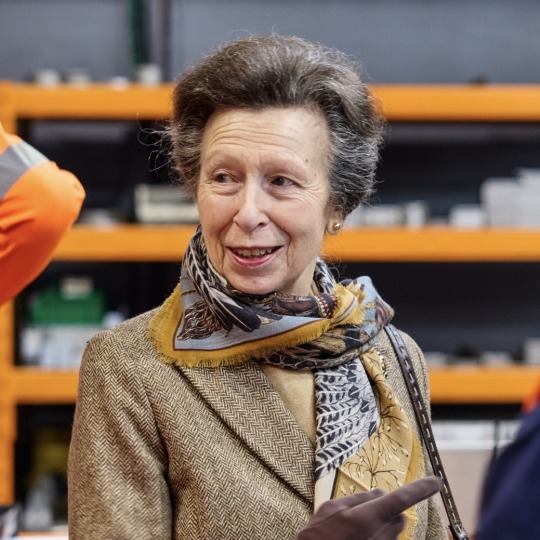
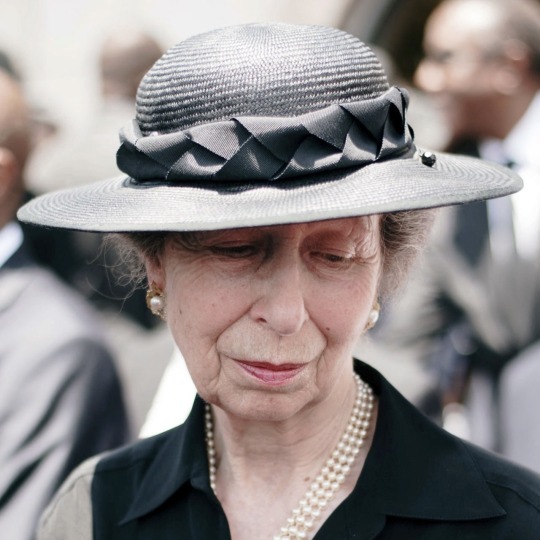

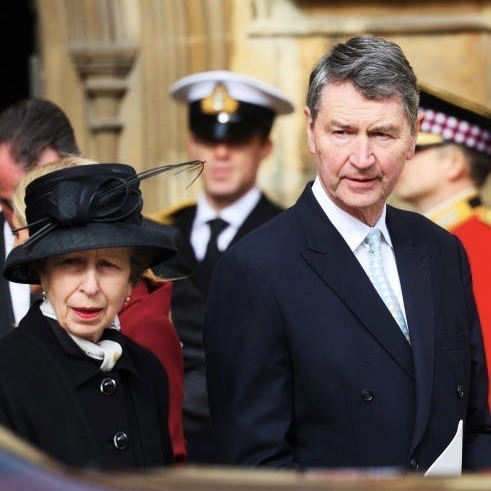
The Princess Royal’s Official Engagements in February 2024
01/02 Visited ReBoot (Moray Computer Recycling) in Forres. 🖥️
As Warden, opened the Queen Elizabeth II classrooms at Gordonstoun School. 🏫
Visited Lossie Community Hub at the Warehouse Theatre, in Lossiemouth. 🎭
Unofficial Sir Tim, as Chair of the Board of Trustees, attended the opening ceremony of the Zimingzhong 凝时聚珍: Clockwork Treasures from China's Forbidden City exhibition at the London Science Museum. 🐉🧧🕰️
03/02 With Sir Tim As Patron of the Scottish Rugby Union, attended the Six Nations Rugby Match between Wales and Scotland at Principality Stadium in Cardiff. 🏴🏴🏉
05/02 Visited Dressability Clothing Alterations Charity in Swindon, to mark its 25th Anniversary. 👗🪡🧵
As Commandant-in-Chief (Youth) of St John Ambulance, attended the dedication of a new Community Response Unit in Devizes, Wiltshire. 🚑
06/02 Held an Investiture at Windsor Castle. 🎖️
As Patron of the Royal College of Occupational Therapists, attended the launch of Nottingham West Primary Care Network’s Interactive Group Therapy at Plumptre Hall. 🩺
As President of the UK Fashion and Textile Association Limited, visited GH Hurt and Son in Nottingham. 🪡
With Sir Tim As Royal Fellow of the Royal Academy of Engineering, attended the announcement of the winner of The Queen Elizabeth Prize for Engineering at the Science Museum in London. ⚙️🥂
07/02 As Colonel-in-Chief of The Royal Logistic Corps, visited the Defence Explosive Ordnance Disposal, Munitions and Search Training Regiment at St George’s Barracks in Bicester. 💥
As President of the Commonwealth War Graves Commission, visited the Commission’s Headquarters in Maidenhead. 🪦
As Patron of Catch22, visited the Commissioned Rehabilitative Services at Community Links in London. 🔗
08/02 As Vice Patron of the British Horse Society, visited Wormwood Scrubs Pony Centre in West London. 🐎
As President of the Royal Yachting Association, attended the Annual Luncheon at Trinity House in London. 🛥️🥪
09/02 In Wales, Princess Anne; 🏴
As Royal Patron of the National Coastwatch Institution, visited Worms Head Station in Rhossili, followed by a Reception at South Gower Sports Club in Scurlage. 🔎🍾
Visited Newport Medieval Ship. 🚢
Visited Newport Transporter Bridge which is undergoing maintenance. 🌉
10/02 With Sir Tim As Patron of the Scottish Rugby Union, attended the Six Nations Rugby Match between France and Scotland at Murrayfield Stadium in Edinburgh. 🇫🇷🏴🏉
12/02 As Patron of Swinfen Telemedicine, attended a Meeting at the Royal Society of Medicine. 💊
As Chancellor of the University of Edinburgh, held a Dinner at Buckingham Palace. 🎓
13/02 Held an Investiture at Windsor Castle. 🎖️
As Master of the Corporation of Trinity House, chaired the Quarterly Meeting of the Court at Trinity House. 📆
14/02 As Royal Patron of the National Coastwatch Institution, visited Hengistbury Head Station near Bournemouth. 🌊
As Colonel-in-Chief of the Intelligence Corps, visited I Company at Hamworthy Barracks in Poole. 🕵️♀️
15/02 Visited the Ordnance Survey National Mapping Agency in Southampton. 🗺️
With Sir Tim Attended Evensong and the James Caird Society’s Dedication Service followed by a Reception in Westminster Abbey, to mark the 150th Anniversary of the birth of Sir Ernest Shackleton. 🔭🧭🇦🇶
16/02 Visited knife crime community group ‘Off the Streets’ North Northamptonshire in Wellingborough. 🚫🔪
20/02 As President of the UK Fashion and Textile Association, visited Laxtons Limited in Baildon near Bradford. 🧶
As President of the UK Fashion and Textile Association, visited Marton Mills in Otley, West Yorkshire. 🪡
21/02 In Doncaster, South Yorkshire, Princess Anne;
Visited Agemaspark Precision Engineering Company. ⚙️
Visited Haith Group Vegetable Processing Machinery Company. 🥕🥦
As Patron of the Butler Trust, visited HM Prison and Young Offender Institution Doncaster. 🚓👮♀️
As Past Master of the Worshipful Company of Carmen, attended a Joint Services Awards Dinner at Painters’ Hall in London. 🍽️
22/01 Visited London South Bank Technical College and Lee Marley Academy. ✏️👷
As Patron of Save the Children UK, visited Mary’s Living and Giving Shop in Wandsworth. 👚
23/02 unofficial Departed Heathrow Airport for Namibia 🇬🇧✈️🇳🇦
24/02 unofficial Arrived at Windhoek Hosea Kutako International Airport in Namibia. ✈️🇳🇦
Representing The King, Princess Anne called upon Mrs Monica Geingos (widow of Dr Hage Geingob). 🖤
Unofficial Sir Tim represented Princess Anne, Patron of the Scottish Rugby Union, at the Six Nations Rugby Match between Scotland and England at Murrayfield Stadium in Edinburgh. 🏴🏴🏉
25/02 Representing The King, Princess Anne attended the Burial Service for Dr Hage Geingob at Heroes’ Acre. 🕊️
Later attended a State Luncheon given by The President of Namibia at State House. 🍽️
26/02 unofficial Arrived at Heathrow Airport from Namibia. 🇳🇦✈️🇬🇧
With Sir Tim Attended the British Horseracing Authority’s Thoroughbred Industry Employee Awards at Ascot Racecourse. 🐎🏆
27/02 With Sir Tim Attended a Service of Thanksgiving for the late King Constantine II at St George’s Chapel in Windsor Castle with members of 🇬🇧, 🇬🇷, 🇩🇰 and 🇪🇸 royal families.
28/02 As Patron of the Royal College of Emergency Medicine, attended the Emergency Medicine Trainees' Association Annual Conference at Hilton Newcastle Gateshead. 💉💊
As Royal Patron of the Motor Neurone Disease Association, attended a Rugby League Reception at Leeds Rhinos Rugby Club, in Headingley, Leeds. 🦽🏉
29/02 unofficial Departed from Heathrow Airport for the United Arab Emirates 🇬🇧✈️🇦🇪
Unofficial Sir Tim, as President of Never Such Innocence, attended a 10th anniversary celebration for the charity at Edinburgh Castle. 🏰
Total official engagements for Anne in February: 44
2024 total so far: 85
Total official engagements accompanied by Tim in February: 6
2024 total so far: 23
FYI - due to certain royal family members being off ill/in recovery I won’t be posting everyone’s engagement counts out of respect, I am continuing to count them and release the totals at the end of the year.
#busy princess 👑#please see red comment#aimees unofficial engagement count 2024#princess anne#princess royal#tim laurence#timothy laurence#court circular#february 2024#not all engagements are on here ❤️
34 notes
·
View notes
Text
The Duke & Duchess of Cambridge - January 2020 Engagements
A summary of The Duke & Duchess of Cambridge’s engagement for January 2020, as outlined in the Court Circular, and then some through Instagram.
It’s been a busy month for both William & Catherine! This has been their busiest January (not including January 2018, however over 9 days of engagement were due to their Nordic Royal Tour).
All photos are taken from Kensington Palace’s Instagram (@KensingtonRoyal), unless stated otherwise.
January 7, 2020 - William
The Duke of Cambridge, Joint Patron, the Royal Foundation of The Duke and Duchess of Cambridge, this morning received Sir Timothy Clark (President, Emirates Airline).
January 8, 2020 - William
The Duke of Cambridge, President, British Academy of Film and Television Arts, this afternoon attended a Meeting at 1 St. James's Market, London SW1.
January 8, 2020 - Catherine
The Duchess of Cambridge, Joint Patron, the Royal Foundation of The Duke and Duchess of Cambridge, this morning held an Early Years Meeting.
January 9, 2020 - William
The Duke of Cambridge this morning received Mr. Malcolm White (Master of the Honourable Company of Air Pilots) and Mr. Paul Tacon (Clerk).
January 10, 2020 - Catherine
The Duchess of Cambridge, Joint Patron, the Royal Foundation of The Duke and Duchess of Cambridge, this morning received Mr. Jason Knauf (Chief Executive).
January 14, 2020 - William (not on Court Circular)
Presented honours to Investiture recipients at Buckingham Palace - Per Kensington Palace’s Official Instagram.

January 15, 2020 - Joint Engagement
The Duke and Duchess of Cambridge today visited Bradford City Hall, Centenary Square, Bradford, and were received by Her Majesty's Lord-Lieutenant of West Midlands (Mr. Edmund Anderson).
Their Royal Highnesses this afternoon visited MyLahore British Asian Kitchen, 52 Great Horton Road, Bradford.
The Duke and Duchess of Cambridge afterwards joined representatives from Near Neighbours and Better Start Bradford at the Khidmat Centre, 36 Spencer Road, Bradford.

January 16, 2020 - William
The Duke of Cambridge, Joint Patron, the Royal Foundation of The Duke and Duchess of Cambridge, this morning received Mr. Jason Knauf (Chief Executive).
January 20, 2020 - William
The President of the Republic of Ghana called upon The Duke of Cambridge at Buckingham Palace this afternoon.
The President of the Republic of Rwanda called upon His Royal Highness at Buckingham Palace.
January 20, 2020 - Joint Engagement
The Duke and Duchess of Cambridge, on behalf of The Queen, this evening gave a Reception at Buckingham Palace to mark the UK-Africa Investment Summit.

January 21, 2020 - William
The Duke of Cambridge, President, United for Wildlife, this morning attended a Taskforce Meeting in the State Apartments, St. James's Palace.
The President of the Republic of Kenya called upon His Royal Highness in the State Apartments, St. James's Palace.
The President of the Arab Republic of Egypt called upon The Duke of Cambridge at Buckingham Palace.
The President of the Republic of Uganda called upon His Royal Highness at Buckingham Palace.
January 21, 2020 - Catherine
The Duchess of Cambridge, Joint Patron, the Royal Foundation of The Duke and Duchess of Cambridge, this afternoon visited Think Tank, Birmingham Science Museum, Millennium Point, Curzon Street, Birmingham, and was received by Mr. Simon Topman (Deputy Lieutenant of West Midlands).

January 22, 2020 - William
The Duke of Cambridge, Joint Patron, the Royal Foundation of The Duke and Duchess of Cambridge, this morning received Mr. Godric Smith (Chairman, Heads Up Campaign).
January 22, 2020 - Catherine
The Duchess of Cambridge, Joint Patron, the Royal Foundation of The Duke and Duchess of Cambridge, this morning visited Ely and Caerau Children's Centre, Michaelston Road, Cardiff, and was received by Her Majesty's Lord-Lieutenant of South Glamorgan (Ms. Morfudd Meredith).

Her Royal Highness, Joint Patron, the Royal Foundation of The Duke and Duchess of Cambridge, this afternoon visited the Forward Trust at HM Prison Send, Ripley Road, Woking, and was received by Mr. Robert Fraser (Deputy Lord-Lieutenant of Surrey).
January 24, 2020 - Catherine
The Duchess of Cambridge, Joint Patron, the Royal Foundation of The Duke and Duchess of Cambridge, this morning held an Early Years Meeting.
January 27, 2020 - Joint Engagement
The Duke and Duchess of Cambridge this afternoon attended the Holocaust Memorial Day Commemoration Ceremony at Central Hall Westminster, Storey's Gate, London SW1, and were received by Mr. Kevin Traverse-Healy (Deputy Lieutenant of Greater London).


January 28, 2020 - Joint Engagement
The Duke and Duchess of Cambridge, Joint Patrons, the Royal Foundation of The Duke and Duchess of Cambridge, this afternoon held a Reception at Kensington Palace.
The Duchess of Cambridge, Patron, National Portrait Gallery, and Patron, Evelina London Children's Hospital, this morning visited Evelina London Children's Hospital, Westminster Bridge Road, London SE1.

January 29, 2020 - Catherine (not on Court Circular)
The Duchess of Cambridge spent the morning at Stockwell Gardens Nursery talking to staff and parents about her landmark survey #5BigQuestions. During her visit, The Duchess spoke to teachers, staff and parents about the survey before joining chefs and apprentices in the kitchen to talk about the importance of good, nutritious food for child development. - Per Kensington Palace Instagram

January 30, 2020 - William (not on Court Circular)
The Duke of Cambridge visited Everton as part of the HeadsUp campaign to hear more about the work Everton in the Community are doing - using football to support the mental health and wellbeing of people from all walks of life in Merseyside. - Per Kensington Palace Instagram

January 31, 2020 - William (Court Circular*)
The Duke of Cambridge, Joint Patron, the Royal Foundation of The Duke and Duchess of Cambridge, this morning received the Rt Hon Helen Clark (formerly Prime Minister of New Zealand and formerly Administrator of the United Nations Development Programme).
Two things I’ve just noticed about the Court Circular:
Some events (listed above) are not included in the Court Circular AT ALL. KP needs to step up as its their responsibility. This gives the illusion that they’re doing so little.
The filtering system on the Royal Family website are not accurate. If you just filter for The Duchess of Cambridge, it seems like Kate only had three engagements this entire month. Her engagements were grouped under the filter for William, which is misleading.
*I could not find William’s January 31st engagement through the Court Circular on the official Royal Family website. I found it through The Times. Is it just me who might be doing something wrong on the website or is this released to the press only?
Question: How would you count their engagements each month? I want to start tracking the number of engagements but how would you quantify them? Would each event be an engagement (e.g. January 21 - William), or would each day be considered an engagement?
For instance, during their visit to Bradford, they attended three separate events or activities. Would you consider that three engagements or one? I’m curious as to how you guys would tally their monthly engagements as I want to find one method, and stick with it each month.
#The Duke of Cambridge#The Duchess of Cambridge#Prince William#Kate Middleton#January 2020#January#Engagements#Court Circular#Catherine Middleton#The Royal Family#The Royals#British Royal Family
6 notes
·
View notes
Text
Kranky by Name...
Listening to the new Windy & Carl album I was reminded of the enduring greatness of the Kranky label, and that led me to dig up this piece I wrote, originally for the eMusic site, in 2011. There’s a ton of good music here.
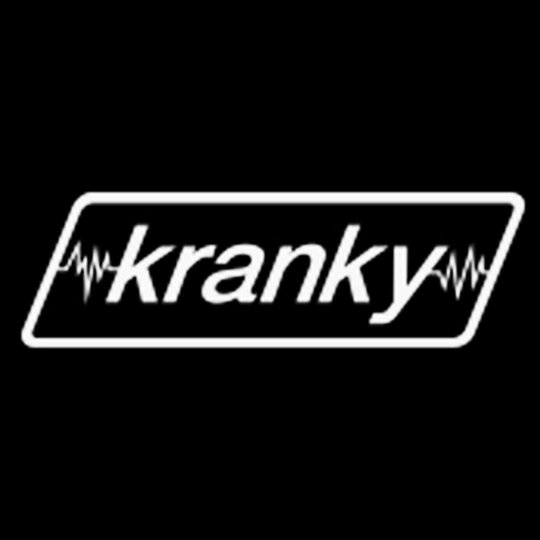
Kranky's great skill is escapology; it is practically defined by its ability to evade definition. If there is received wisdom about the Chicagoan label, it's as a home for abstracted guitars, moody soundscapes and occasionally spiky electronic beats: all very serious, very studious, very intense. And maybe when Bruce Adams and Joel Leoschke founded it in 1993 it could be pegged as a relatively straightforward experimental-leaning indie label – but with each release it slips under, around, and away from standard categories. “Post-rock” doesn't capture the sheer variety of its guitar-based output, “ambient” is far too vague a term for its more textural releases, and “electronica” can't even come close to describing its more far-out sonic experiments. And despite its own claim to have “a very specific aesthetic” there is variety – such variety – in its catalogue. For every jittery and discordant Nudge record, there's Tim Hecker one that washes over you with waves of bliss; for every Charalambides creeping around disturbing corners of rare mindstates, there's an Out Hud that leaps out at you with vim, vivacity and a spring in its step. What unites them is a sense of switched-on intellects, outsider intelligences seeing what can be done with sound without getting sucked into academic self-regard – but the sounds themselves ebb and flow into new shapes with almost every release. 18 years into its existence, Kranky dares you to try and pin it down.
ESCAPING INDIE ROCK: Labradford 'A Stable Reference' 1995
A Stable Reference by Labradford
Kranky Records began in 1993 with Labradford's 'Prazision' album – a great and unique album, but still recognisably rooted in the same indie-rock soil as the likes of Spacemen 3 and Galaxie 500. The perhaps ironically-titled 'A Stable Reference', however, represented a complete untethering from these reference points, an abstraction and release from rock tropes that – paradoxically – helped make much clearer what “a Kranky record” was. Infused with the most sinister atmospheres of Ennio Morricone and Popol Vuh soundtracks, it is by turns claustrophobic and sweeping in its scope, but always brooding, revealing its dark ideas at its own pace. The term “post-rock” seems almost laughably prosaic next to these strange maps of unknown emotions, but it does describe the way this record marked a real escape from standard structures for the guitar-centred band. Its influence on the releases that would follow is clear: not in its sound, but in the careful balance between freedom and focus that it set up.
(See also: Windy & Carl 'Depths', Spiny Anteaters 'Current', Dadamah 'This is Not a Dream')
THE MULTI-FACETED: AMP 'Stenorette' 1998
Stenorette by Amp
Some of Kranky's acts are as indefinable as the label itself, as perfectly illustrated by the loose-knit AMP. Based around the core of British duo Richard Walker and Karine Chaff, the band evolved rapidly through experimental rock styles until this album, made in collaboration with Robert Hampson of Loop/Main and beat programmer Olivier Gauthier, which takes a completely magpie approach to genre. From the Sonic Youth guitar clang of 'You are Here' to crystalline piano pieces like 'Songe' and 'Just-Ice', meandering analogue synth trickles to dubbed-out breakbeats, completely abstract drones to practically jaunty songs, 'Stenorette' pulls together dozens of disparate elements – yet they never feel chosen arbitrarily just for the sake of diversity, but rather are selected entirely according to the musical logic of the album. That it avoids sounding like some kooky postmodern collage is impressive; that it shows a coherent and compelling personality of its own is little short of a miracle.
(See also: Keith Fullerton Whitman 'Playthroughs', Deerhunter 'Microcastle / Weird Era Cont.')
THE ELEMENTAL SYMPHONY: Godspeed You Black Emperor! 'Lift Yr. Skinny Fists Like Antennas To Heaven!' 2000
Lift Your Skinny Fists Like Antennas To Heaven by Godspeed You! Black Emperor
This is the big one. Originally releasing vinyl only on their Constellation label, the intense Canadian collective GYBE! found a simpatico home with Kranky to reach out to wider audiences, in particular with this glorious suite. Over four 20-minute tracks, they redraw the rule of structure for the rock band format, paced with impeccable patience as they build from delicately sketched frameworks, sometimes with spoken narration, to vast climactic plateaux of guitar distortion surrounded by the swooping orchestral lines of the Silver Mount Zion instrumentalists. Laden with meaning to be unpicked and decoded, the record expresses everything from political fortitude and cosmic awe to utter desolation, sweeping the listener along in a slowly-changing but unstoppable drama of absolutely staggering scale.
(See also: Stars Of The Lid 'The Tired Sound of Stars Of The Lid')
KRANKY GETS ITS GROOVE ON: Out Hud 'S.T.R.E.E.T. D.A.D.' 2002
Street Dad by Outhud
With all its strangeness and exploration of the darker crevices of the subconscious, it could be easy to categorise this as a label for wallflowers. But Kranky knows how to dance, never better shown than on the two albums by Out Hud. This, their debut, came out just as LCD Soundsystem were bursting onto the scene and !!! (who share three members with Out Hud) were finding their groove; disco-punk was the sound of the moment. But true to Kranky style, this album has a deeply psychedelic, improvisatory feel – like a more discofied Gang Gang Dance, perhaps – that makes it stand out a mile from its contemporaries. Despite the kookiness of track names like 'Hair Dude You're Stepping on my Mystique', the snaking grooves, acidic keyboard sounds and genuinely dubwise FX mark this out as a very serious piece of dancefloor art.
(See also: Fontanelle 'Style Drift', Jessamine 'Jessamine', Strategy 'Drumsolo's Delight')
FRACTURED PSYCHEDELICISMS: Charilambides 'Unknown Spin' 2003
Unknown Spin by Charalambides
Whether you call it “free folk”, “music of the new weird America” or just good old fashioned freakouts, there's no doubting that the music of Tom and Christina Carter comes from a very psychedelic place. Allied to the loose movement that includes Sunburned Hand Of The Man, MV&EE, No-Neck Blues Band etc, Charilambides make a more strung-out noise than most of their contemporaries, the sound of people unafraid to explore their inner landscape, however scary it might become. Sometimes loose and discordant to the point of complete meltdown, sometimes coagulating around recognisable guitar solos that unfold like they've escaped from a Jefferson Airplane jam, these four tracks – especially the half-hour title number – are spacey, spooky and very, very weird indeed.
(See also: Tom Carter 'Monument', Christina Carter 'Electrice')
INNER AMBIENCE: Pan American 'Quiet City' 2004
Quiet City by Pan•American
Some of Kranky's greatest releases are those that dissolve rhythm and float free into wide open imaginative spaces. Certain acts, like Ethernet, work entirely with electronics, but more often, as with Pan American, they will blur the label's rich traditions of processed guitar drone with musique concrète, ambient and even new age music to make elegantly layered sounds one can get completely lost in. But this is not music to switch off to and doesn't offer the anodyne comfort of “chillout”: as the title perhaps suggests, 'Quiet City' invites contemplation and exploration of its spaces, but like any city, while it is complex and beautiful, there is dirt and threat here too. Like sitting outside in chilly dawn air in the aftermath of a chaotic night or on the morning before a life-changing decision, it feels like it exists outside of the usual routine of things.
(See also: Tim Hecker 'Ravedeath, 1972' / Ethernet '144 Pulsations of Light' / White Rainbow 'Prism of Eternal Now' / Windy & Carl 'Songs for the Brokenhearted' / Keith Fullerton Whitman 'Multiples', Aix Em Klemm 'Aix Em Klemm')
PARALLEL WORLD POP: Atlas Sound 'Logos' 2009
Logos by Atlas Sound
Just as we all sometimes need a danceable rhythm, once in a while even the most dedicated noisenik or experimentalist secretly likes to hear a sweet melody – and Kranky provides that too, whether it's the mutant disco-pop of Out Hud's second record or the sweet hymns of Low. Alright, we're not talking Katy Perry here, but records like 'Logos' still shamelessly deal in the pleasure principle and instantly-recognisable songs and are passionately loved for that. The presence of Stereolab's Laetitia Sadier and Animal Collective's Noah Lennox (aka Panda Bear) shows the territory this record is operating in, with plenty of references to psychedelic pop and Krautrock of the past all put into a kaleidoscope and reflected into new technicolour patterns. There's nothing facile or zoned-out about it, though – this is the gimlet-eyed and singular vision of Deerhunter frontman and “true queer art punk” Bradford Cox, and it exposes new intensities and weirdnesses with every play.
(See also: Low 'Secret Name', To Kill A Petty Bourgeoisie 'The Patron', Deerhunter 'Spring Hall Convert', Out Hud 'Let us Never Speak of it Again')
1 note
·
View note
Photo
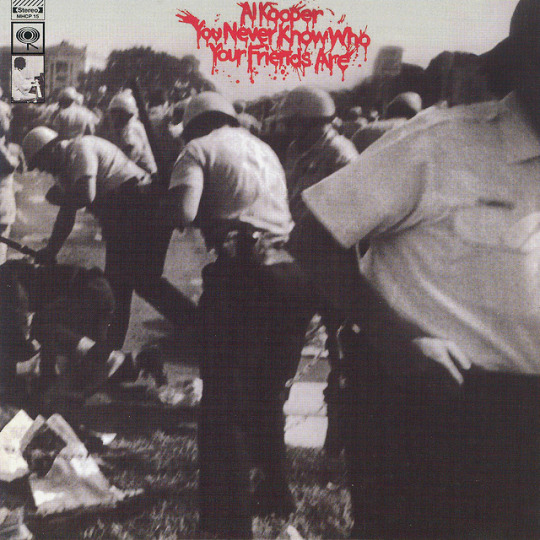
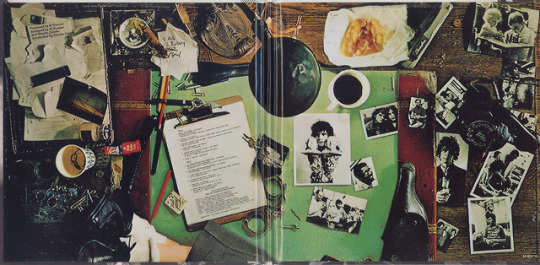
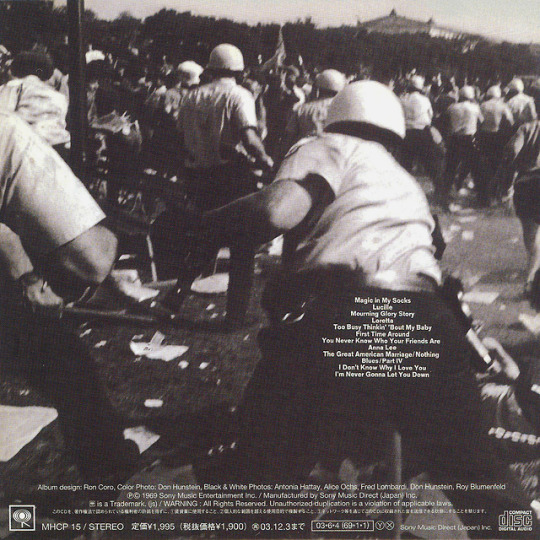
Al Kooper - You Never Know Who Your Friends Are (US 1969)
You Never Know Who Your Friends Are was the second album by New York City-based multi-instrumentalist Al Kooper, issued in 1969 on Columbia Records.
A continuation of sorts of his début, the album displays another eclectic mix of rock, rhythm and blues, jazz, pop, and blues, though without the psychedelics that had somewhat permeated through I Stand Alone. Utilizing a large group of musicians under the direction of Charlie Calello, known collectively as "The Al Kooper Big Band", Kooper also strayed away from the heavy string orchestrations of his début. Relying on more original compositions, with nine of twelve tracks by Kooper (with the remaining three by Harry Nilsson), and Motown staff songwriters, the album further helped to cement Kooper's reputation.
Al Kooper's second solo album is a bit more uneven than its predecessor, I Stand Alone, for understandable reasons -- it would have been nothing less than a miracle for Kooper to have matched the consistency and daring of that album, and he doesn't have quite the same array of memorable tunes here. He's still ranging freely, however, through pop, jazz, R&B, and soul, with some songs that are among the most glorious of his output. "Magic in My Sock" is a good enough opener, making up in its virtuoso horn parts and guitar for what it lacks in melodic invention; "Lucille" is hardly the best ballad that Kooper has ever written, but it forms a good bridge to "Too Busy Thinkin' About My Baby," a Motown cover that's one of the highlights of Kooper's entire output -- from a black singer this track would be a priceless gem, but coming from Kooper it's extraordinary in its every nuance.
You get some blues instrumental (principally piano-based) and an abortive but entertaining effort at pop/rock with the title tune, and then Kooper plunges into arty balladry with the hauntingly beautiful "The Great American Marriage/Nothing." He goes back into Motown territory, just as successful as before, on "I Don't Know Why I Love You," and back to moody art-song with Harry Nilsson's "Mourning Glory Story." Kooper returns to the soulful side of rock on "Anna Lee (What Can I Do for You)" and finishes with "I'm Never Gonna Let You Down" -- the latter would be worth the price of the album by itself, a soaring, more lyrical and moody original classic that manages to be unpretentious yet epic in its treatment. [AMG + Wikipedia]
»»» Al Kooper Biography ««« Al Kooper (born Alan Peter Kuperschmidt; February 5, 1944) is an American songwriter, record producer and musician, known for organizing Blood, Sweat & Tears (although he did not stay with the group long enough to share its popularity), providing studio support for Bob Dylan when he went electric in 1965, and also bringing together guitarists Mike Bloomfield and Stephen Stills to record the Super Session album. He has had a successful solo career since then, written music for film soundtracks, and has also lectured in musical composition. He continues to perform live.
Kooper, born in Brooklyn, grew up in Hollis Hills, Queens, New York. His first musical success was as a fourteen-year-old guitarist in The Royal Teens, best known for their 1958 ABC Records novelty twelve-bar blues riff, "Short Shorts". In 1960, he joined the songwriting team of Bob Brass and Irwin Levine, and wrote "This Diamond Ring", which became a hit for Gary Lewis and the Playboys. When he was twenty-one, Kooper moved to Greenwich Village.
He performed with Bob Dylan in concert in 1965, and in the recording studio in 1965 and 1966, including playing Hammond organ with Dylan at the Newport Folk Festival in 1965. Kooper also played the Hammond organ riffs on Dylan's "Like a Rolling Stone". It was in those recording sessions that Kooper met and befriended Mike Bloomfield, whose guitar-playing he admired. He worked extensively with Bloomfield for a number of years. Kooper played organ once again with Dylan during his 1981 world tour.
Kooper joined The Blues Project as their keyboardist in 1965, leaving the band shortly before their gig at the Monterey Pop Festival in 1967. He formed Blood, Sweat & Tears in 1967, leaving after the group's first album, Child Is Father to the Man, due to creative differences in 1968. He recorded Super Session with Bloomfield and Stills in 1968 as well, and in 1969 he collaborated with 15-year-old guitarist Shuggie Otis on the album Kooper Session. In 1975 he produced the debut album by The Tubes.
Kooper has played on hundreds of records, including ones by The Rolling Stones, B. B. King, The Who, The Jimi Hendrix Experience, Alice Cooper, and Cream. On occasion, he has even overdubbed on his own efforts, as on The Live Adventures of Mike Bloomfield and Al Kooper and on other albums, as "Roosevelt Gook".[4] After moving to Atlanta in 1972, he discovered the band Lynyrd Skynyrd, and produced and performed on their first three albums, including the single "Sweet Home Alabama" and "Free Bird". Kooper also wrote the score for the TV series Crime Story and the film The Landlord and has also written music for several made-for-television movies. He was also the musical force behind many of the children series, Banana Splits pop tunes, including "You're the Lovin' End."
Kooper has published a memoir, Backstage Passes: Rock 'n' Roll Life In The Sixties (1977), now available in revised form as Backstage Passes & Backstabbing Bastards: Memoirs of a Rock 'N' Roll Survivor (1998). The latter includes indictments against "manipulators" within the music industry, including his one-time business manager, Stan Polley. His status as a published author enabled him to join (and act as musical director of) the Rock Bottom Remainders, a band made up of writers including Dave Barry, Stephen King, Amy Tan, & Matt Groening.
Kooper is currently retired from teaching songwriting and recording production at Berklee College of Music in Boston, and plays weekend concerts with his bands The ReKooperators and The Funky Faculty. In 2008, he participated in the production of the album Psalngs, the debut release of Canadian musician John Lefebvre and was inducted into the Musicians Hall of Fame and Museum in Nashville, TN.
In 2005 Martin Scorsese produced a documentary, No Direction Home: Bob Dylan for the PBS American Masters Series, Kooper's most notable playing with Dylan is the organ parts on "Like a Rolling Stone". Kooper had been invited to the session as an observer, and hoped to be allowed to sit in on guitar, his primary musical instrument. Kooper uncased his guitar and began tuning it. After hearing Mike Bloomfield, who was the hired session guitarist for the sessions, warming up in the room, Kooper concluded that Bloomfield at that point, was a much better guitarist, so Kooper put his guitar aside and retreated into the control room.
As the recording sessions progressed, keyboardist Paul Griffin was moved from the Hammond organ to piano. Kooper quickly suggested to producer Tom Wilson that he had a "great organ part" for the song (which he later confessed was just a ruse to play in the session), and Wilson responded, "Al, you're not an organ player, you're a guitar player", but Kooper stood his ground. Before Wilson could explicitly reject Kooper's suggestion, he was interrupted by a phone call in the control room. Kooper immediately went into the studio and sat down at the organ, though he had rarely played organ before the session. Wilson quickly returned, and was shocked to find Kooper in the studio. By this time, Kooper had been playing along with Dylan and The Band, his organ can be heard coming in an eighth-note just behind the other members of the band, as Kooper followed to make sure he was playing the proper chords. During a playback of tracks in the control room, when asked about the organ track, Dylan was emphatic: "Turn the organ up!"
Performers: ♦ Al Kooper: piano, organ, guitar, ondioline, vocals and arrangements ♦ With The Al Kooper Big Band under the direction of Charlie Calello ♦ Guitars: Ralph Casale, Stu Scharf and Eric Gale ♦ Piano and Organ: Ernie Hayes, Paul Griffin and Frank Owens ♦ Moog Synthesizer: Walter Sears ♦ Electric Bass: Chuck Rainey, Jerry Jemmott and John Miller ♦ Drums: "Pretty" Purdie and Al Rodgers ♦ Trumpets: Bernie Glow, Ernie Royal and Marvin Stamm ♦ Trombones: Ray Desio, Jimmy Knepper, Bill Watrous and Tony Studd ♦ Saxophones: George Young, Sol Schlinger, Seldon Powell and Joe Farrell ♦ Voices: Hilda Harris, Connie Zimet, Albertine Harris, Lois Winter, Mike Gately, Lou Christie, Robert John and Charlie Calello ♦ Record Cover Art Direction and Design: Ron Coro
Discography (Solo): ○ I Stand Alone (February 1969) ○ You Never Know Who Your Friends Are (October 1969) ○ Easy Does It (September 1970) ○ New York City (You're A Woman) (June 1971) ○ A Possible Projection of the Future / Childhood's End (April 1972) ○ Naked Songs (1973) ○ Act Like Nothing's Wrong (January 1977) ○ Championship Wrestling (featuring Jeff "Skunk" Baxter) (1982) ○ Rekooperation (June 1994) ○ Black Coffee (August 2005) ○ White Chocolate (2008)
Album Tracks: 01. "Magic in My Socks" (3:55) 02. "Lucille" (3:24) 03. "Too Busy Thinkin' 'bout My Baby" (Norman Whitfield, Janie Bradford, 3:20) 04. "First Time Around" (2:48) 05. "Loretta (Union Turnpike Eulogy)" (3:48) 06. "Blues, Part IV" (5:04) 07. "You Never Know Who Your Friends Are" (2:53) 08. "The Great American Marriage / Nothing" (3:19) 09. "I Don't Know Why I Love You" (Lula Mae Hardaway, Don Hunter, Paul Riser, Stevie Wonder, 3:22) 10. "Mourning Glory Story" (Harry Nilsson, 2:16) 11. "Anna Lee (What Can I Do For You)" (3:18) 12. "I'm Never Gonna Let You Down" (4:37)
10 notes
·
View notes
Text
Upswing Is Seen for jazz As Newport Series Nears
by John S. Wilson [Jazz Critic, the New York Times] June 26, 1970
Jazz reached a nadir of popularity last year, according to George Wein, producer of the Newport Jazz Festival.
“But this year will be a jazz year,” he predicted as he prepared for the 17th year of the festival, “because there is now more concern among jazz fans. They realize how close their music has come to being extinct. The festival's advance sale is al ready 20 per cent ahead of 1968, which set a record.”
Last year was the year when Mr. Wein spiced up the Newport Jazz Festival with rock groups, offering pro grams that produced a strong divergence of opinion among jazz followers and attracted crowds, which, during one concert, battered down a seg ment of the wooden fence surrounding Festival Field. After the festival, Mr. Wein was required by the City of Newport to install a chain link fence and to make changes in the method of policing the area around the field.
Details of Cutback
Because of these expenses, which were shared by the Newport Folk Festival, and reaction to the turmoil at the Jazz Festival, the Folk Festival, held two weeks later, wound up with a financial loss.
As a consequence, there will be no Folk Festival this year, the Jazz Festival will be reduced to three nights (July 10 to 12) instead of the customary four, and no rock groups will perform — not even jazz‐influenced rock groups such as Blood, Sweat and Tears, which played last year.
“Even the jazz fans who complained about rock last year generally considered Blood, Sweat and Tears acceptable,” Mr. Wein ad mitted.
This year, during three evening concerts and two afternoons, Mr. Wein will place the musical focus directly on jazz, starting with an open ing night tribute on July 10 to Louis Armstrong, who will celebrate his 70th birthday on July 4. Mr. Armstrong will be present with a contingent of long‐time New Orleans musicians, including the Preservation Hall Band, the Eureka Jazz Band and the New Orleans Ragtime Band, as well as another New Orleans native, Mahalia Jackson, the gospel singer.
Afternoon workshops, a regular feature of the Folk Festivals, will be adapted to the Jazz Festival this year with drum, trumpet and vio lin sessions scattered around the field on Saturday after noon, July 11.
Cosby and His Band
On Sunday afternoon, Bill Cosby, the comedian who is a jazz fan and an enthusiastic drummer, will appear with his group, Badfoot Brown and the Bunions Bradford Marching and Funeral Band.
Among other musicians scheduled to play are the Gary Burton Quartet, the Chico Hamilton Quintet, the Tony Williams Lifetime and the Elvin Jones Trio on Saturday afternoon; the Dizzy Gillespie Quintet, Don Byas, Nina Simone, Ike and Tina Turner, Kenny Burrell, Herbie Mann and a quartet of violinists — Stephane Grappelli, Jean‐Luc Ponty, Ray Nance and Joe Venuti—on Saturday night.
#The New York Times#John S. Wilson#Jazz Critic#Jazz#George Wein#Newport Jazz Festival#Jazz Festival#Folk Festival#Blood Sweat and Tears#Louis Armstrong#New Orleans#Preservation Hall Band#Eureka Jazz Band#New Orleans Ragtime Band#Bill Cosby#Mahalia Jackson#Badfoot Brown#the Bunions Bradford Marching and Funeral Band#Gary Burton Quartet#the Chico Hamilton Quintet#the Tony Williams Lifetime#the Elvin Jones Trio#the Dizzy Gillespie Quintet#Don Byas#Nina Simone#Ike and Tina Turner#Kenny Burrell#Herbie Mann#Stephane Grappelli#Jean‐Luc Ponty
1 note
·
View note
Text
Steve Hackett Announces Seconds Out Tour for November 2020

Off the back of his most successful solo tour yet, selling over 30 thousand tickets for his 2019 UK dates, Steve Hackett has announced that his 2020/21 World Tour will feature the whole of the 1977 Genesis live album Seconds Out in full, plus More!
Seconds Out was the hugely successful double album recorded on Genesis’ 1977 concert tour together with The Cinema Show, from their 1976 tour, and featured Steve Hackett on guitar alongside Mike Rutherford, Tony Banks and Phil Collins who had taken on the role of vocalist following the departure of Peter Gabriel. The tour included music from each of the six studio albums from Steve’s time in Genesis and marked his final recordings with the band as he left to pursue his solo career upon its completion.
The Seconds Out + More! Tour will visit some of the venues Genesis played on that 1977 tour. There will also be additional material, including Steve’s solo concert favourite The Steppes to celebrate the 40th birthday of his fourth solo album Defector.
Steve Hackett says: “I’m thrilled to bring Seconds Out back to life, featuring Genesis material at its most exciting and virtuosic, this time with all numbers played in full plus additional surprises!”
Steve Hackett - 2020 Sun 1 Nov - Brighton Dome Mon 2 Nov - Cardiff St David's Hall Tue 3 Nov - Stoke Victoria Hall Thu 5 Nov - London The Palladium Fri 6 Nov - London The Palladium Sun 8 Nov - Edinburgh Playhouse Mon 9 Nov - Dundee Caird Hall Tue 10 Nov - Carlisle The Sands Centre Thu 12 Nov - Newcastle O2 City Hall Fri 14 Nov - Scunthorpe The Baths Hall Sat 15 Nov - Bradford St George's Concert Hall Mon 16 Nov - Southampton Mayflower Theatre Tue 17 Nov - Cambridge Corn Exchange Wed 18 Nov - Oxford New Theatre Fri 20 Nov - Guildford G Live Sat 21 Nov - Bexhill-on-Sea De La Warr Pavilion Mon 23 Nov - Birmingham Symphony Hall Wed 25 Nov - Manchester O2 Apollo Fri 27 Nov - Leicester De Montfort Hall Sat 28 Nov - Basingstoke Anvil Mon 30 Nov - Liverpool Philharmonic Tue 1 Dec - Glasgow Royal Concert Hall
1 note
·
View note